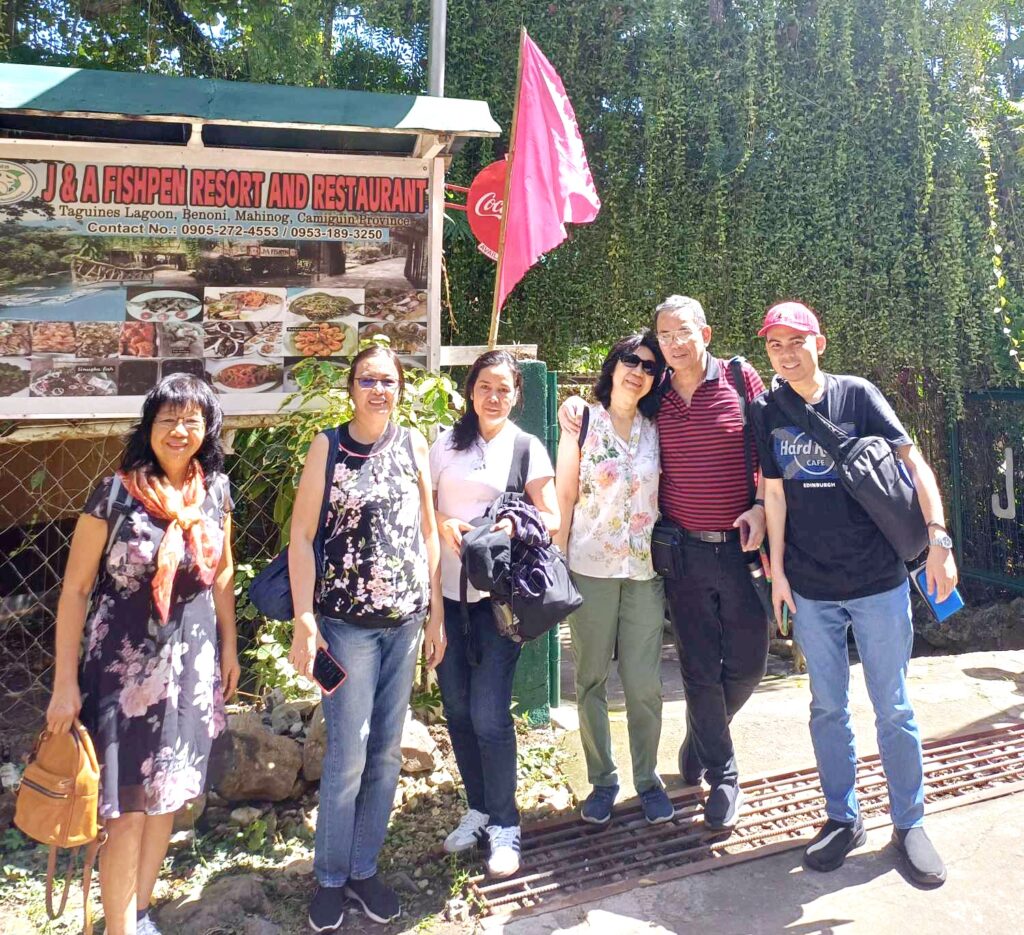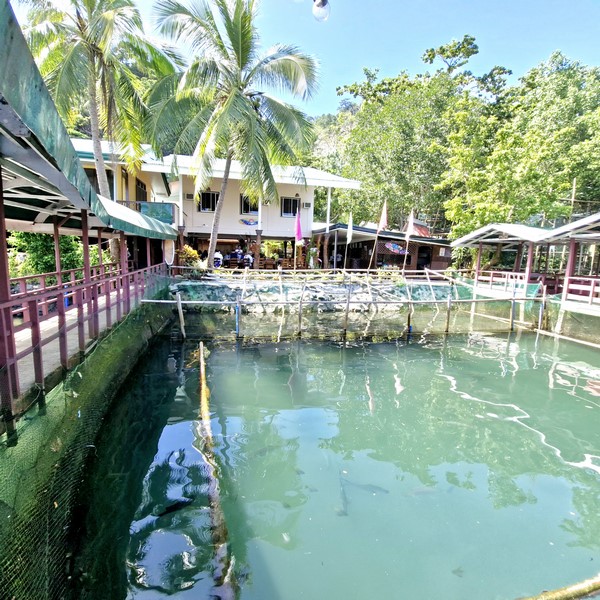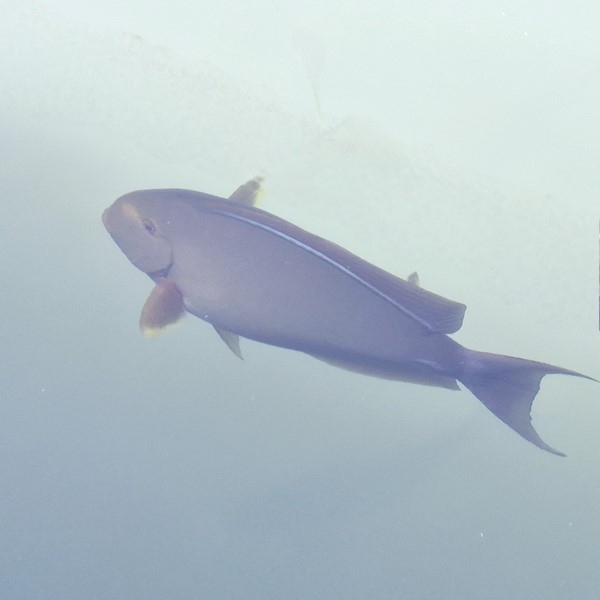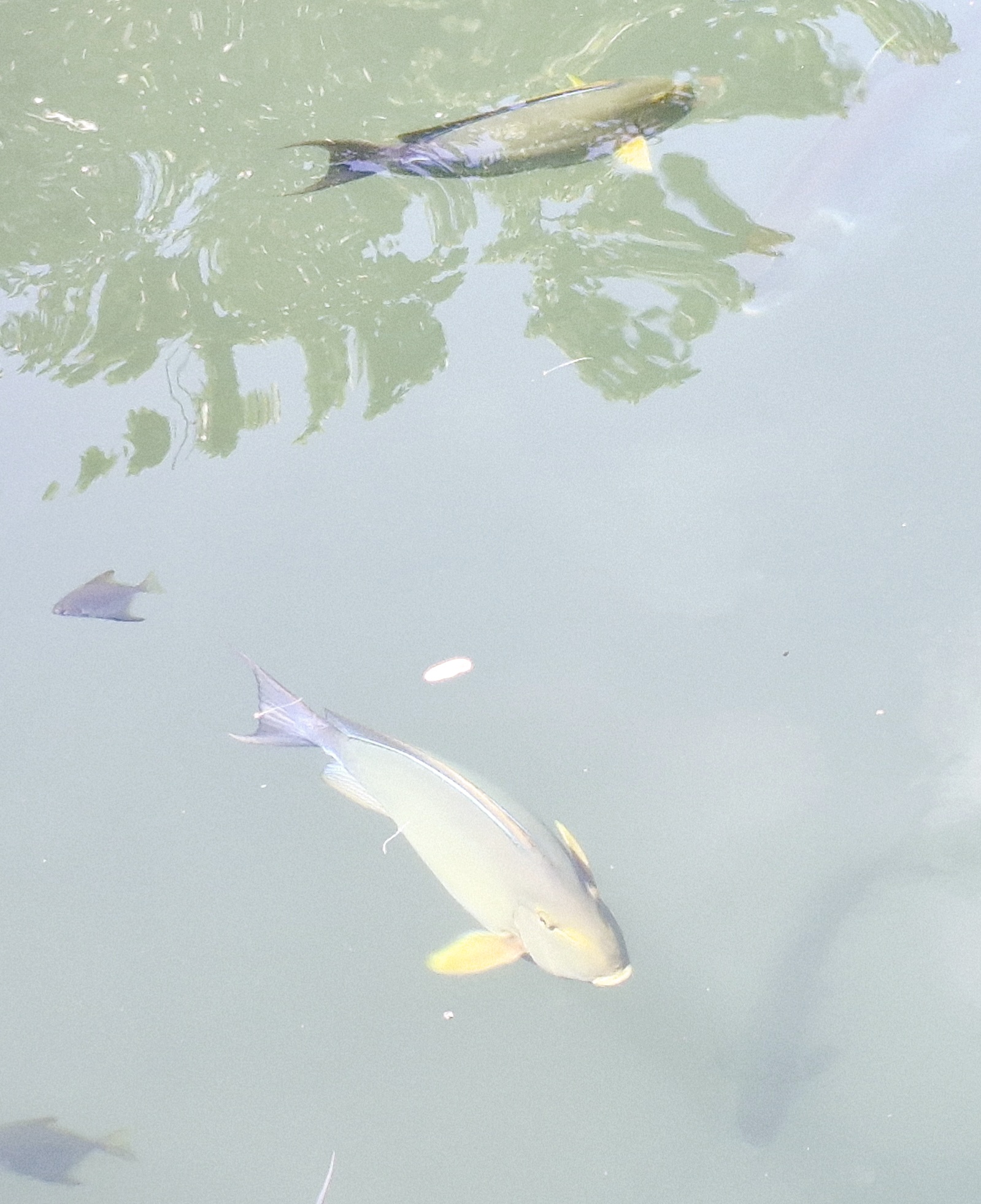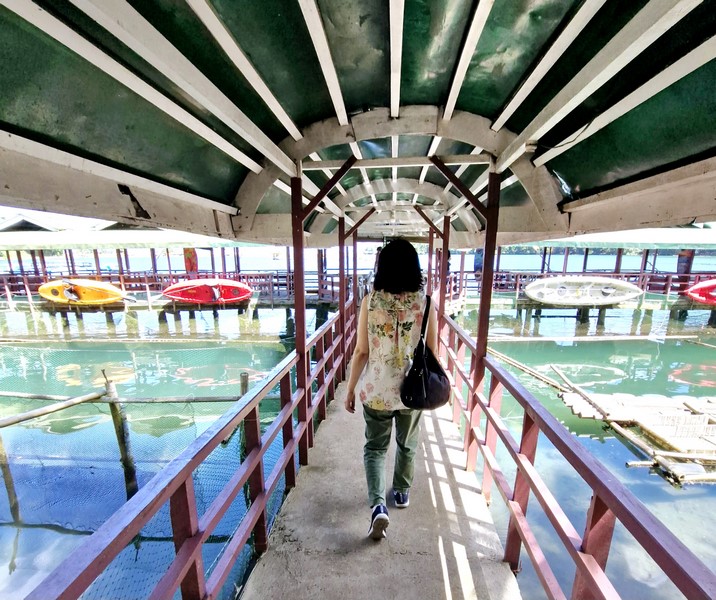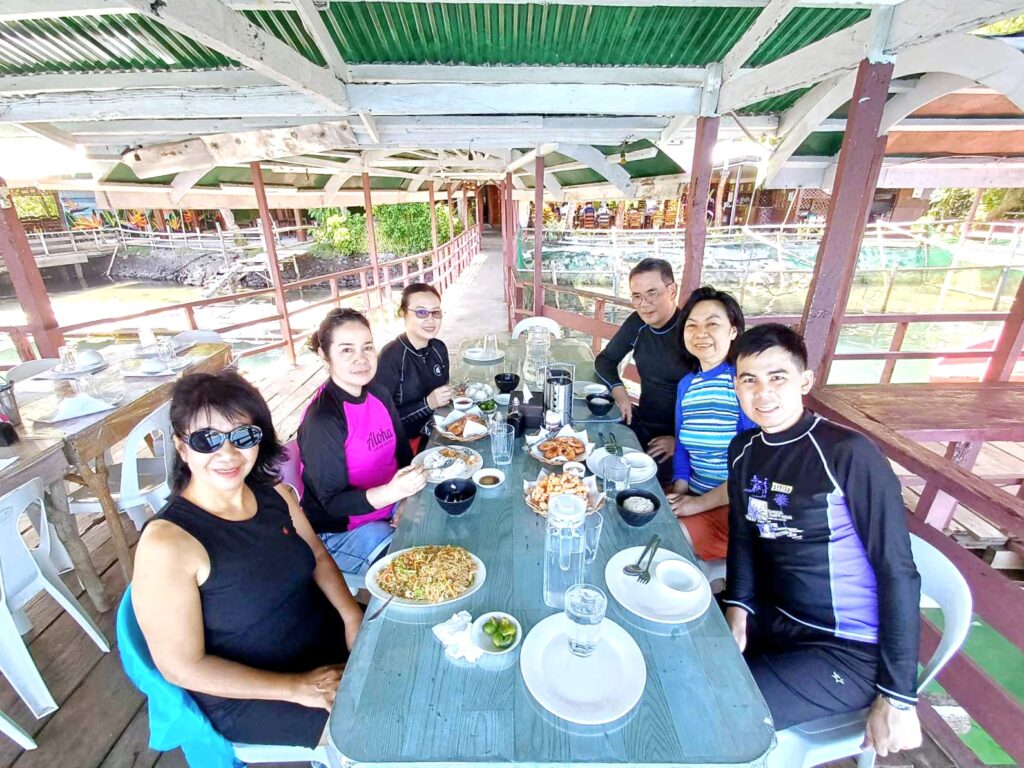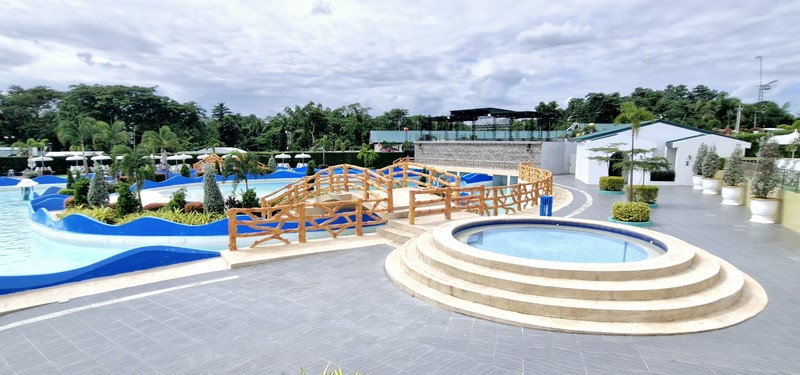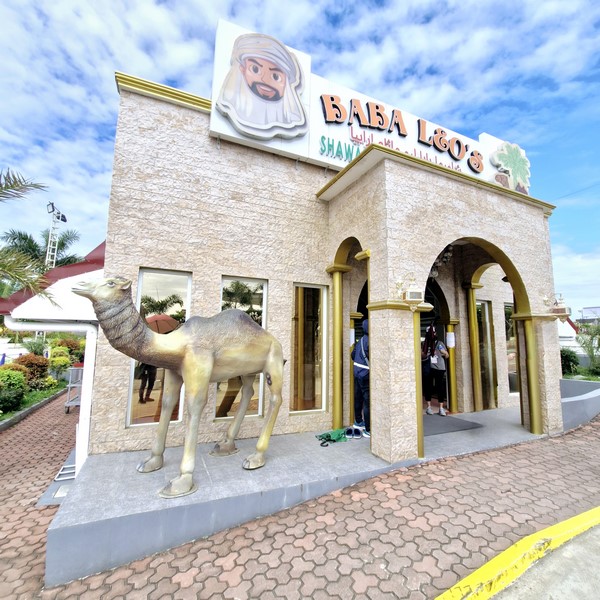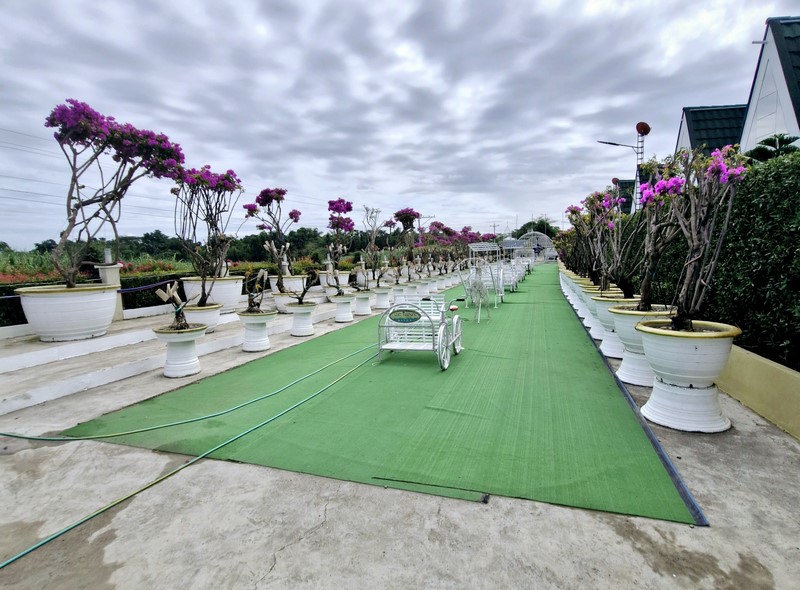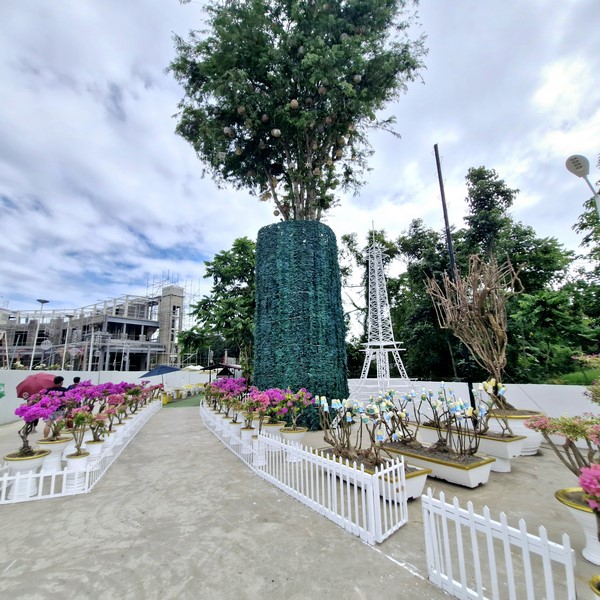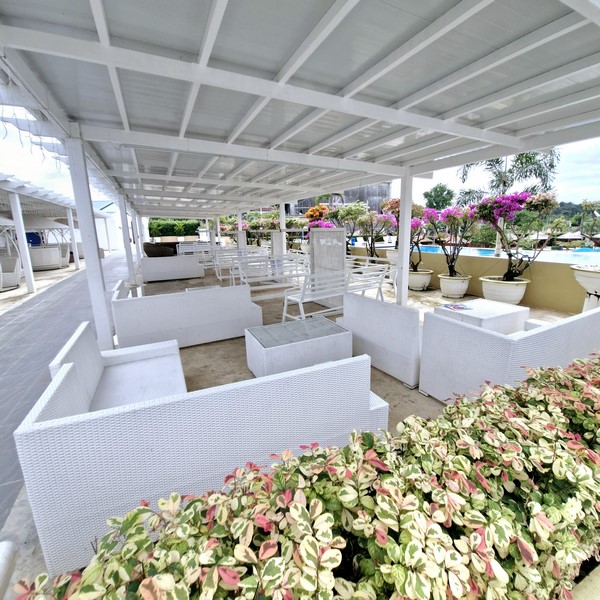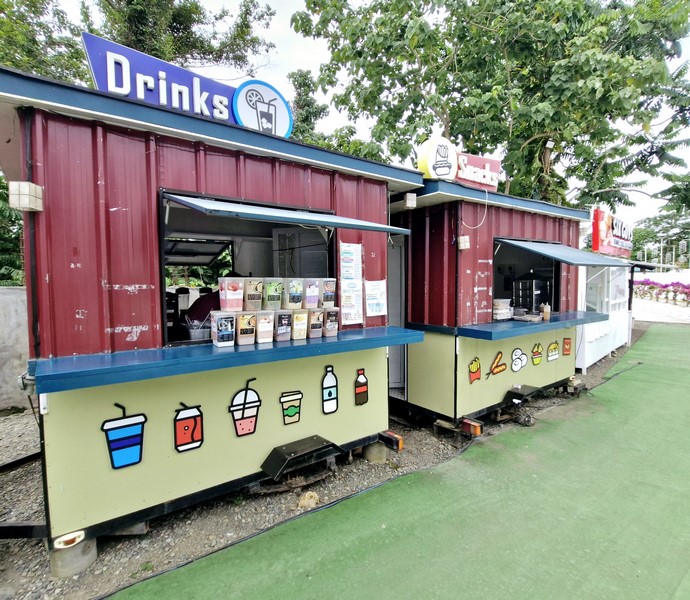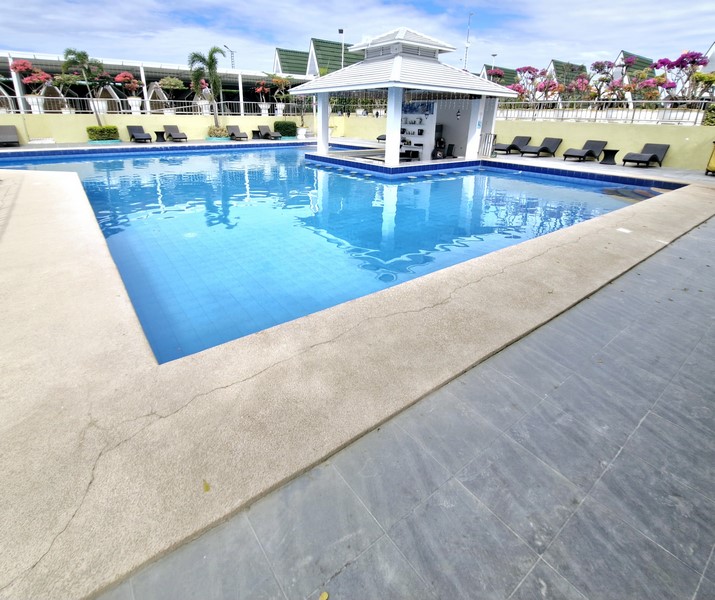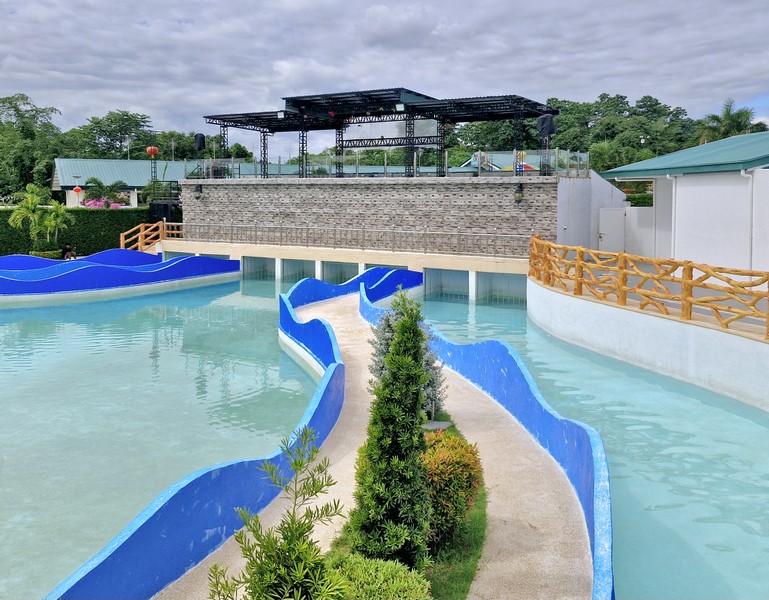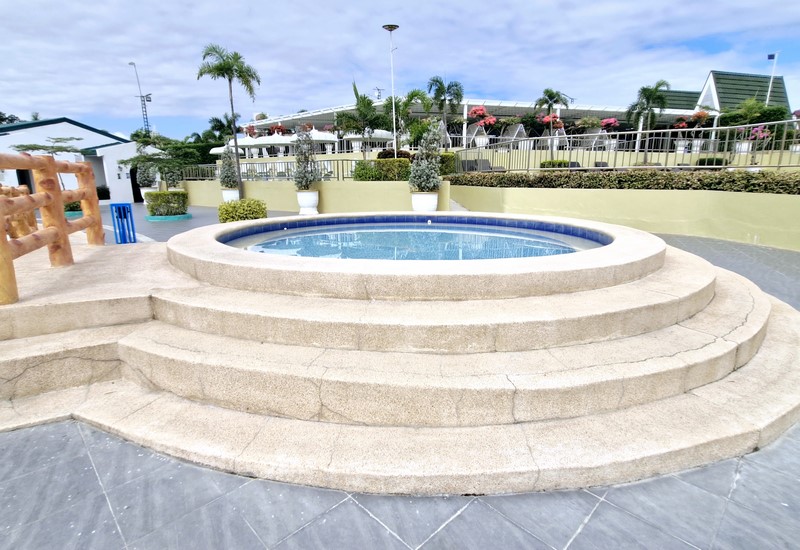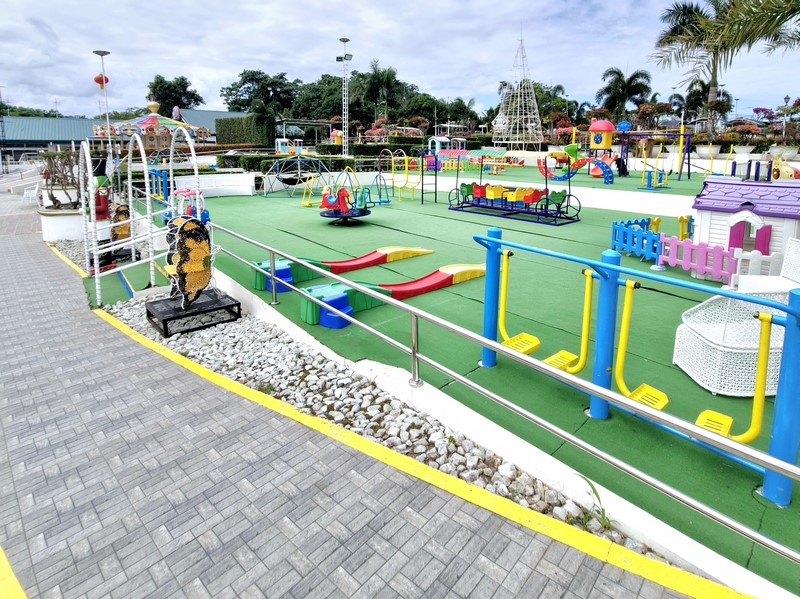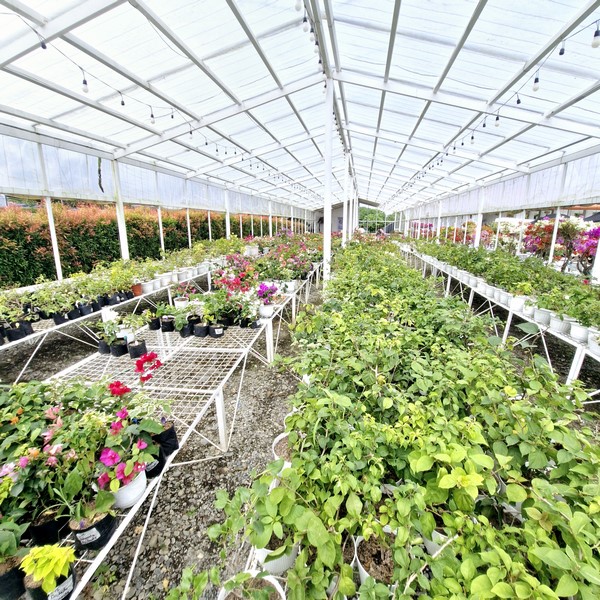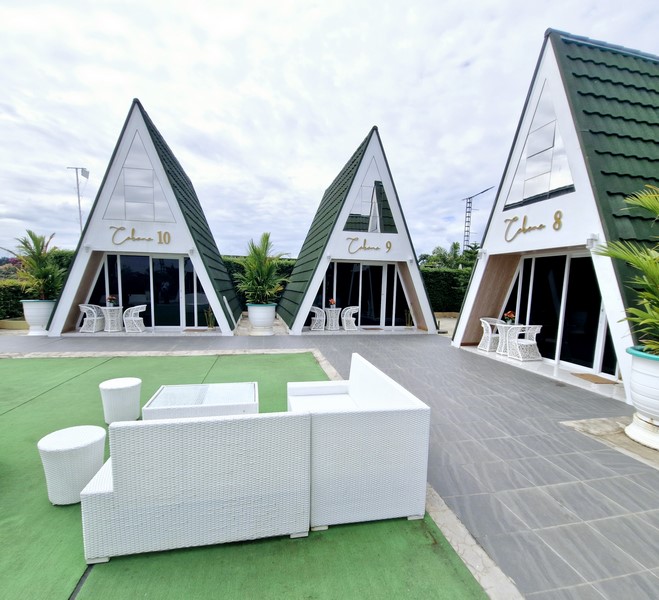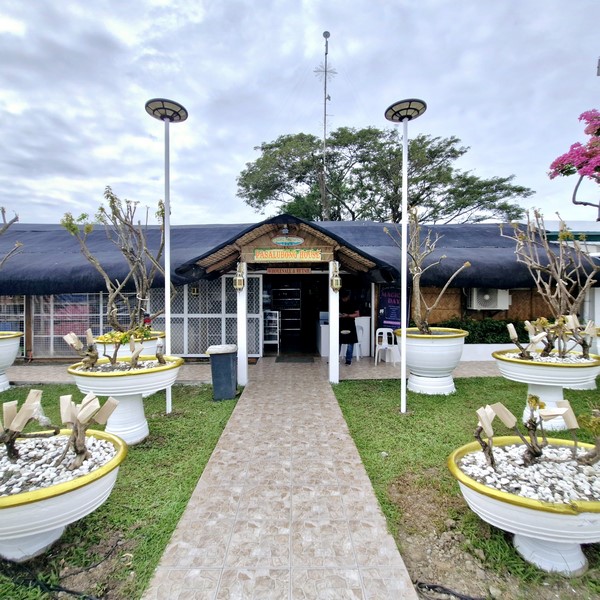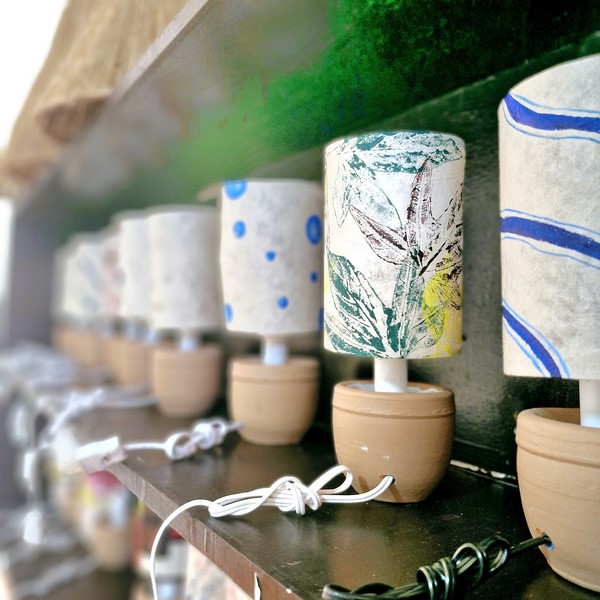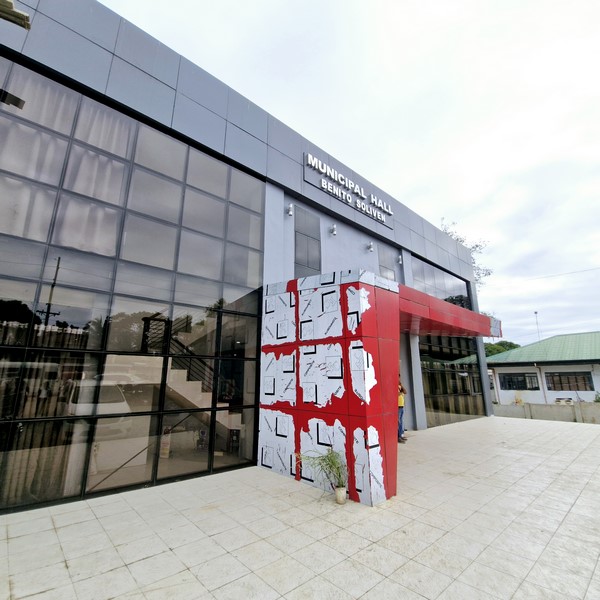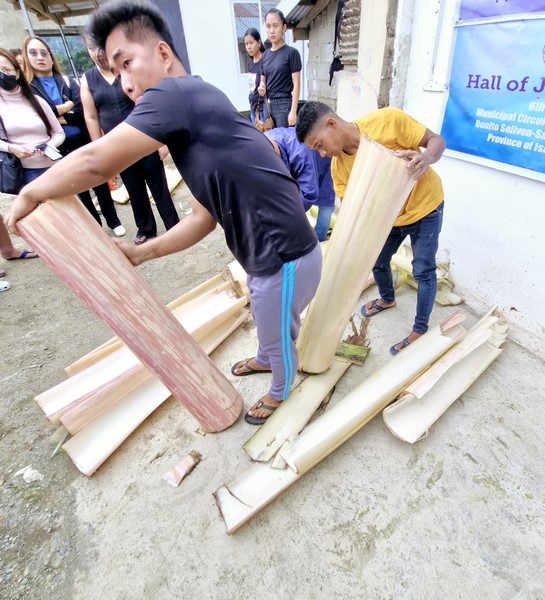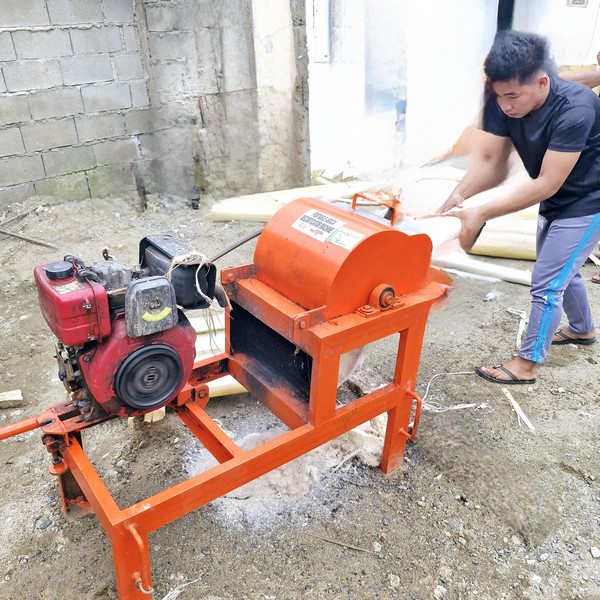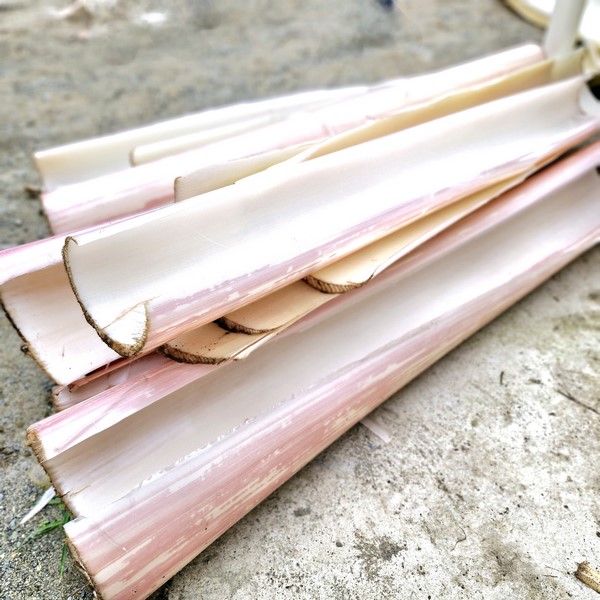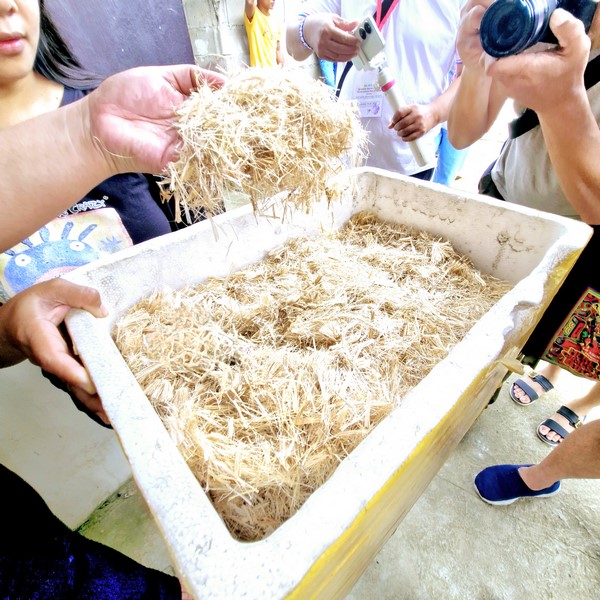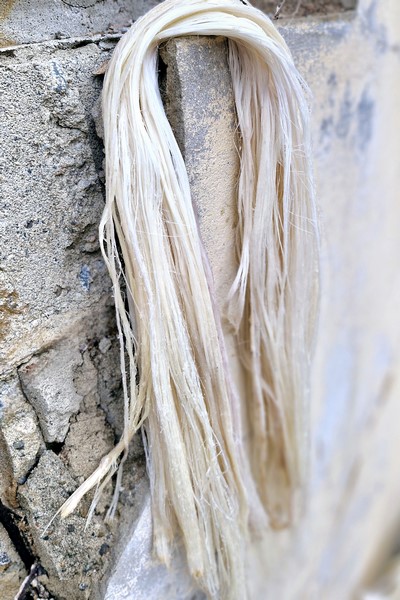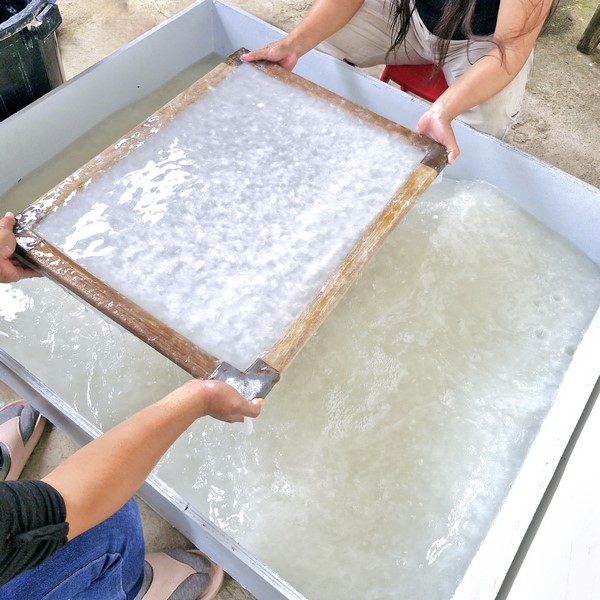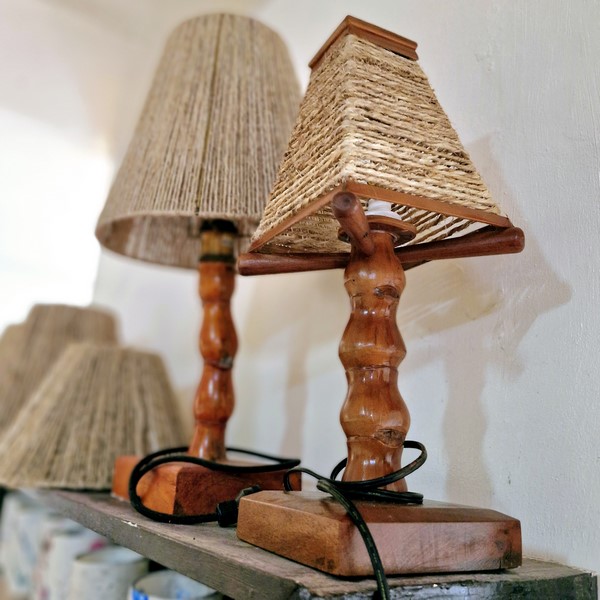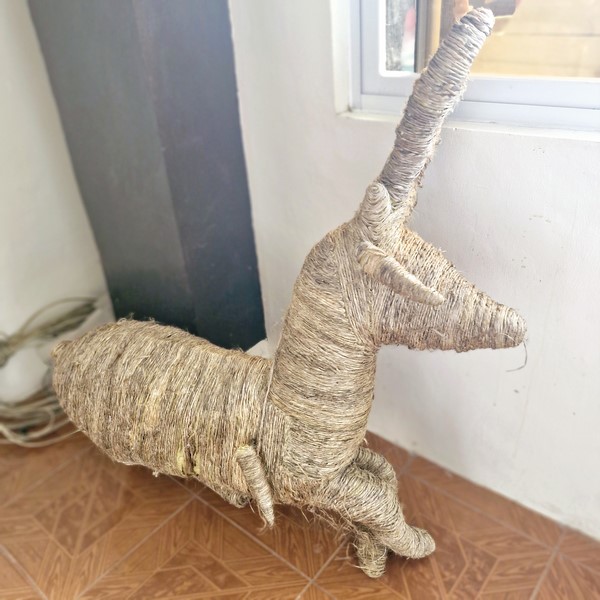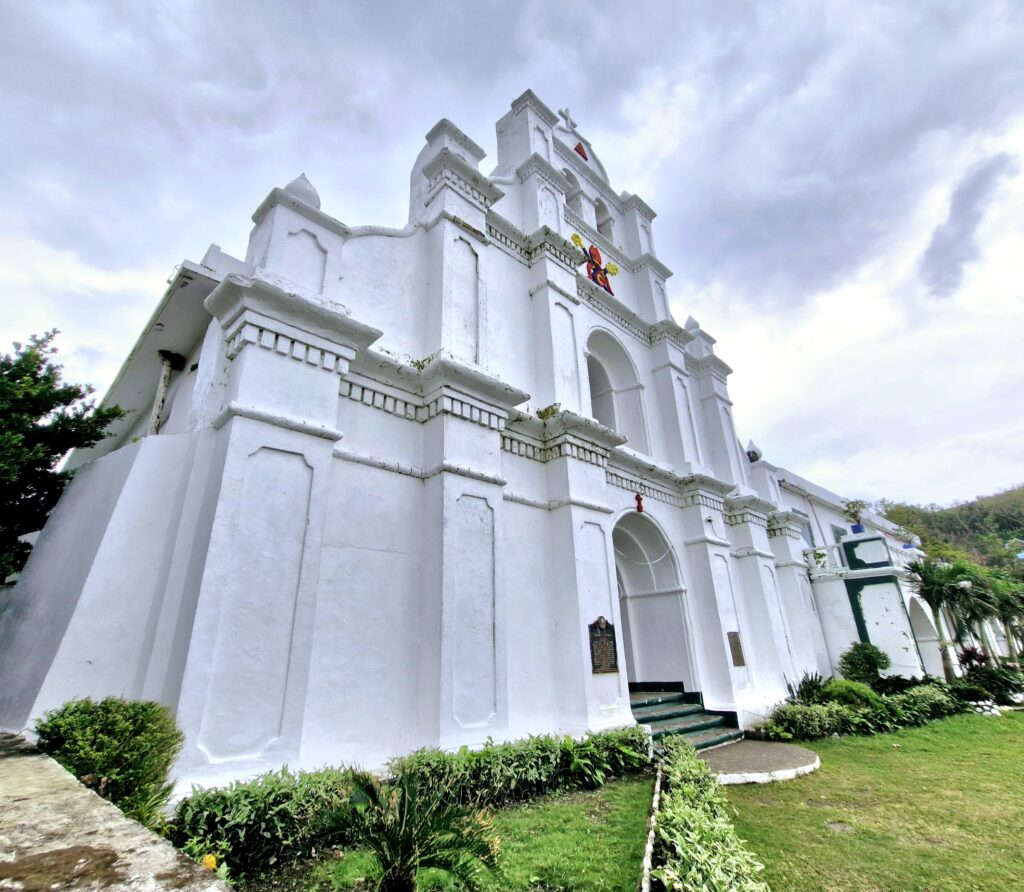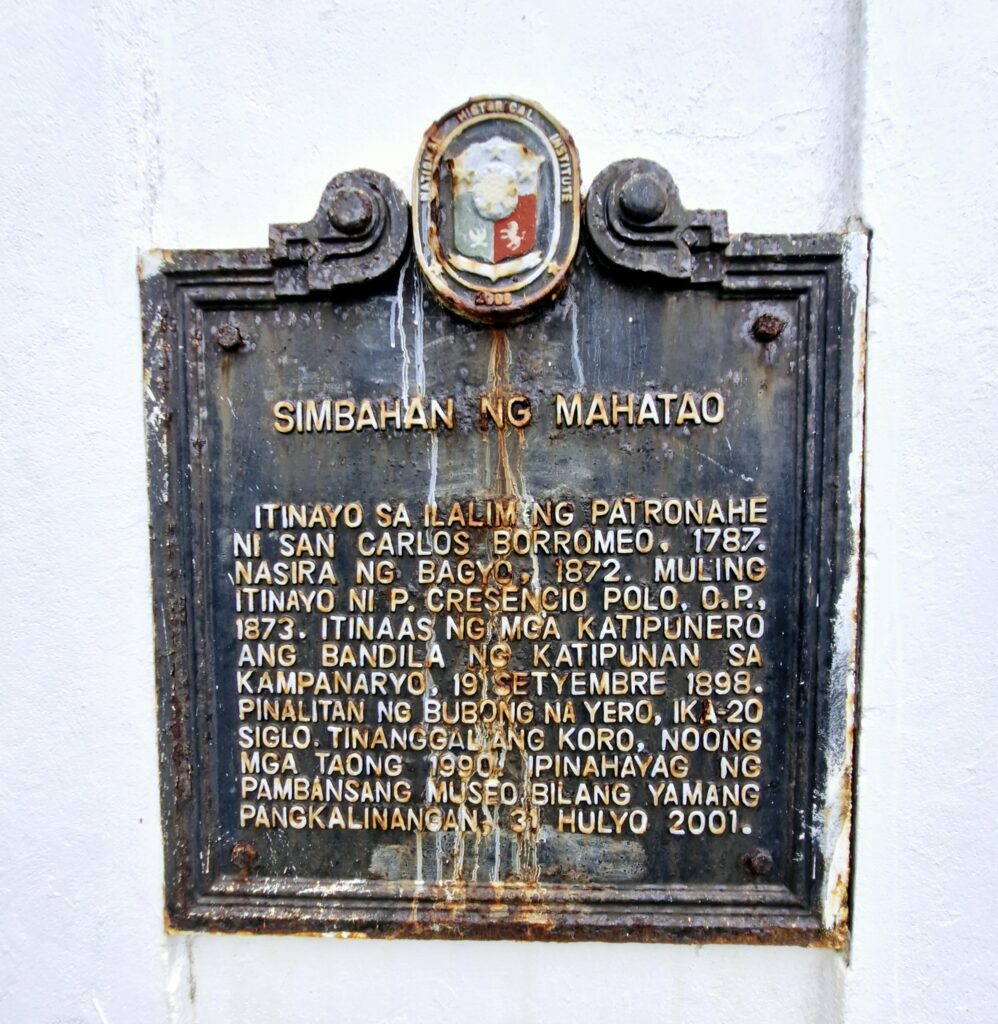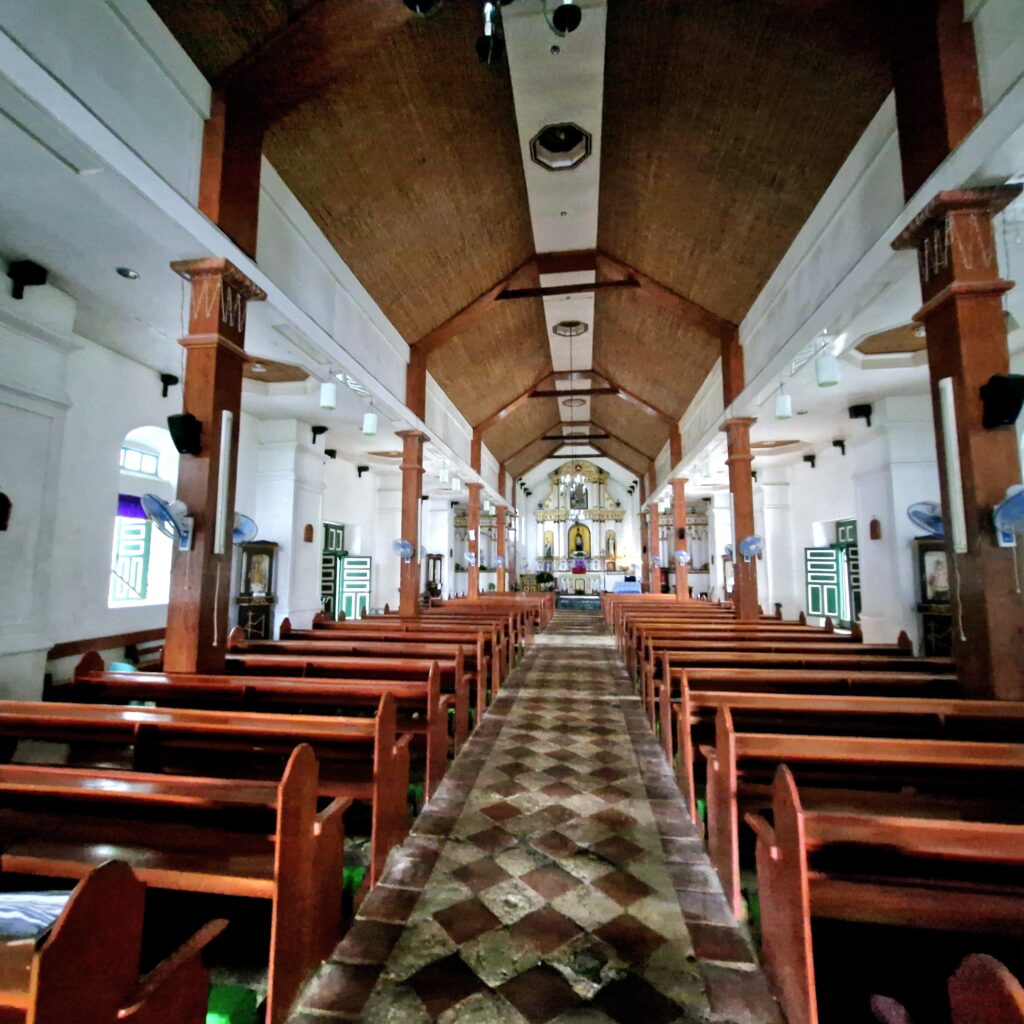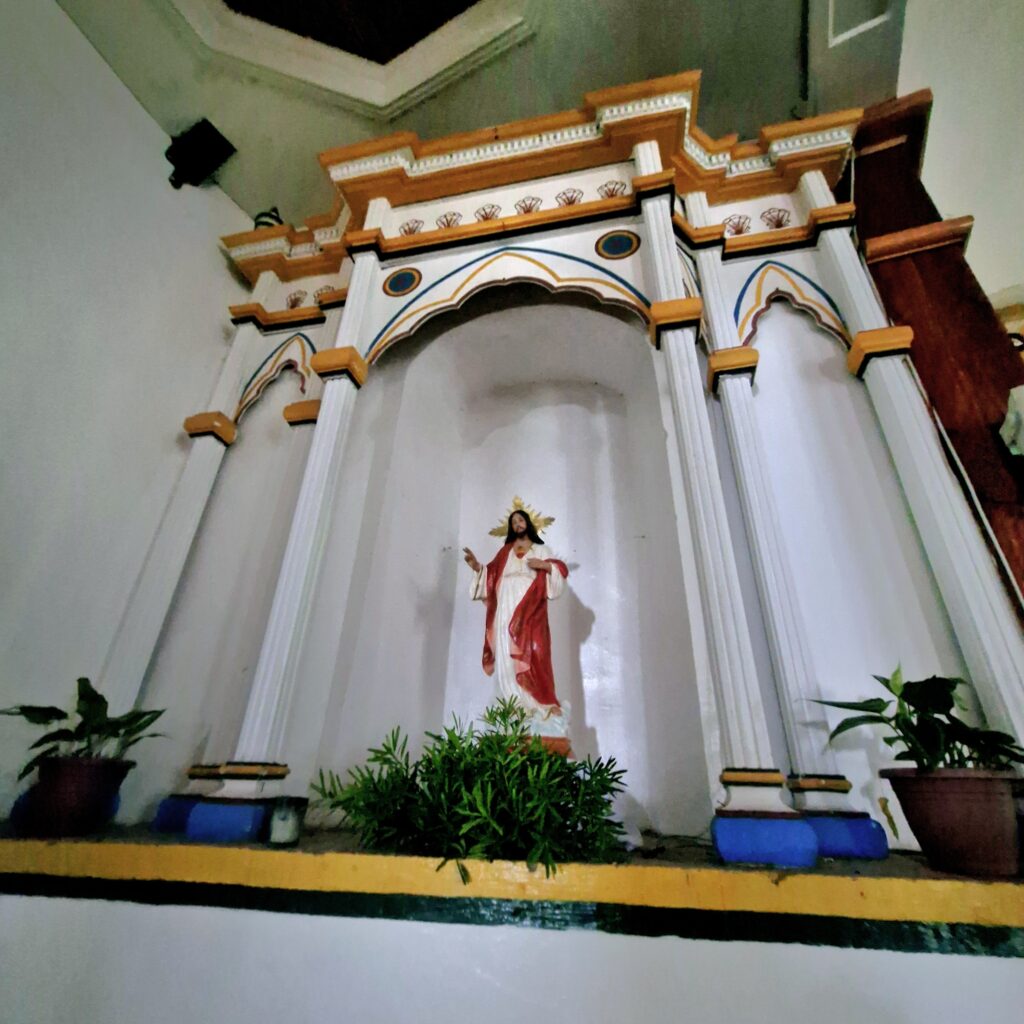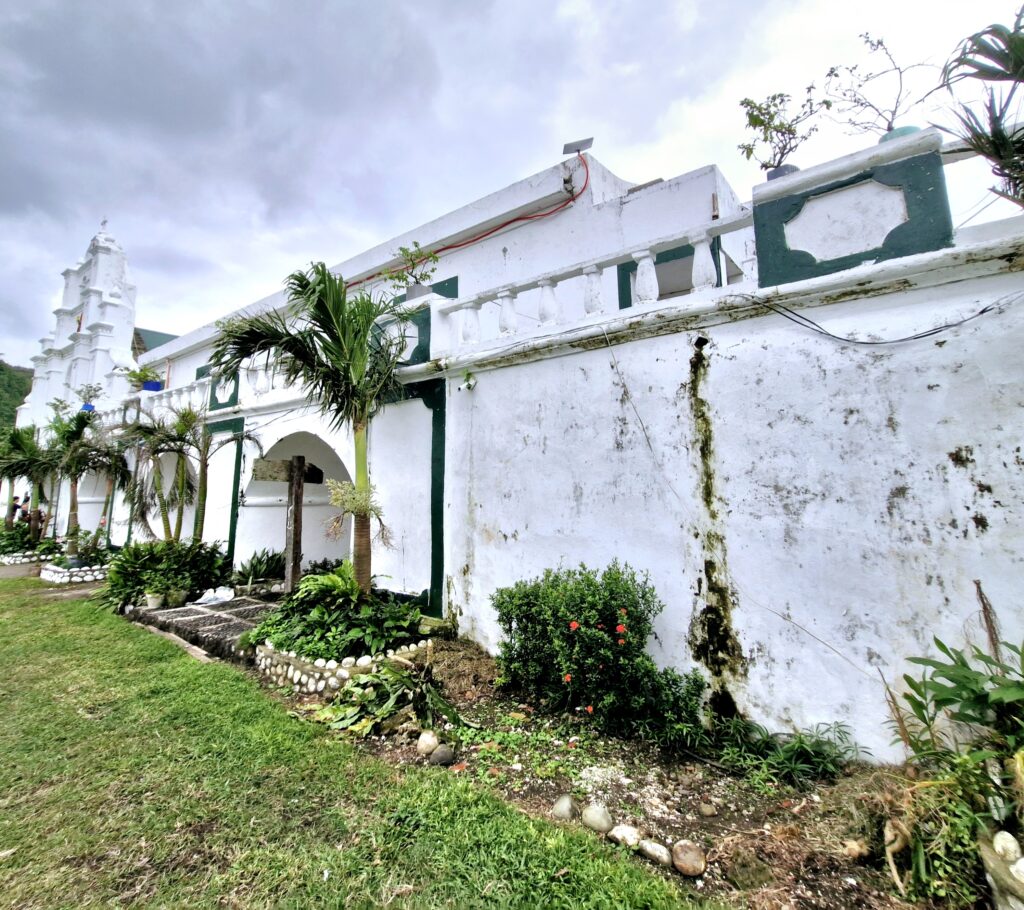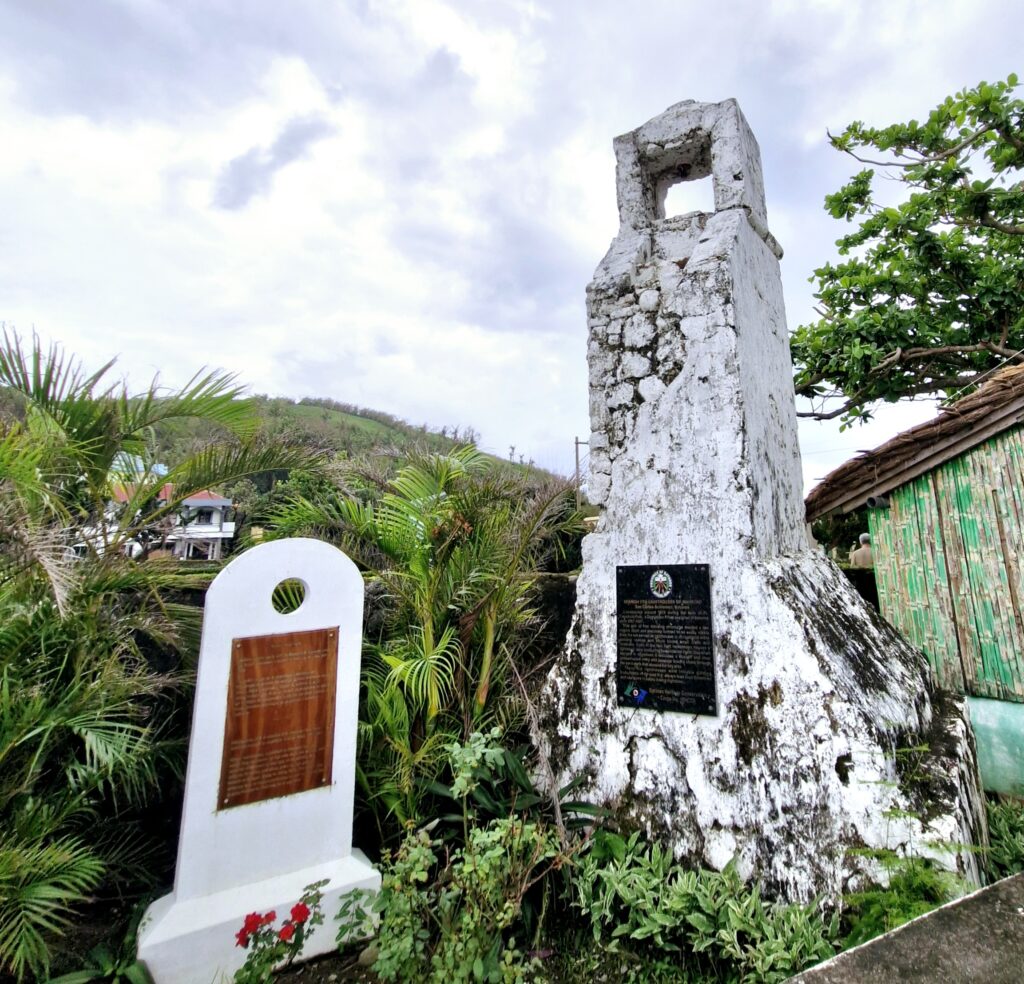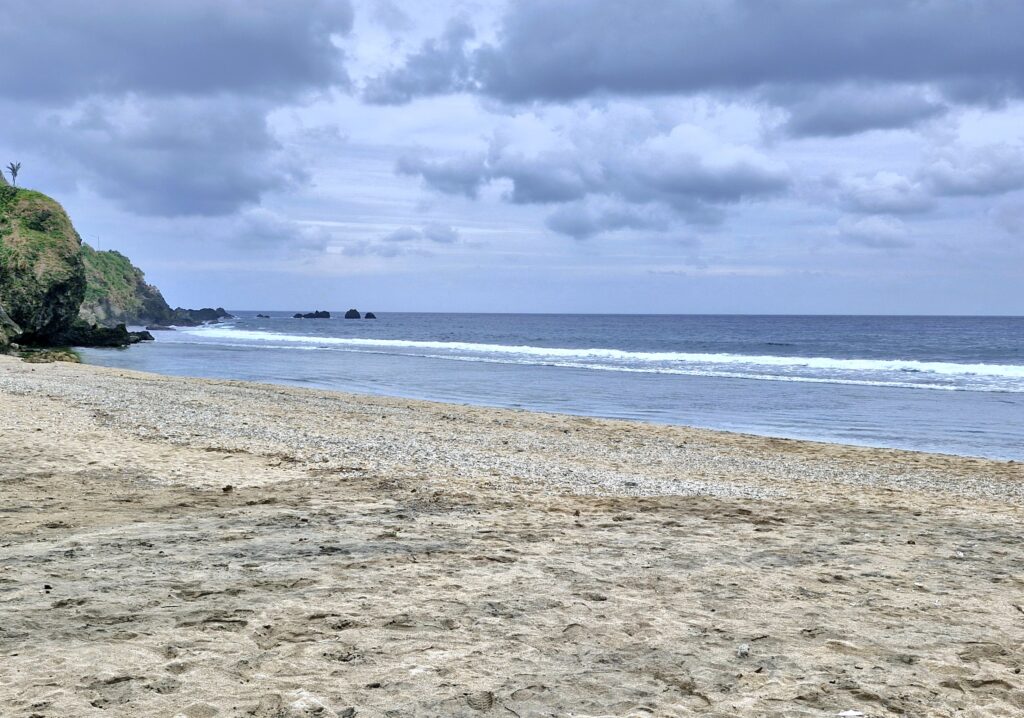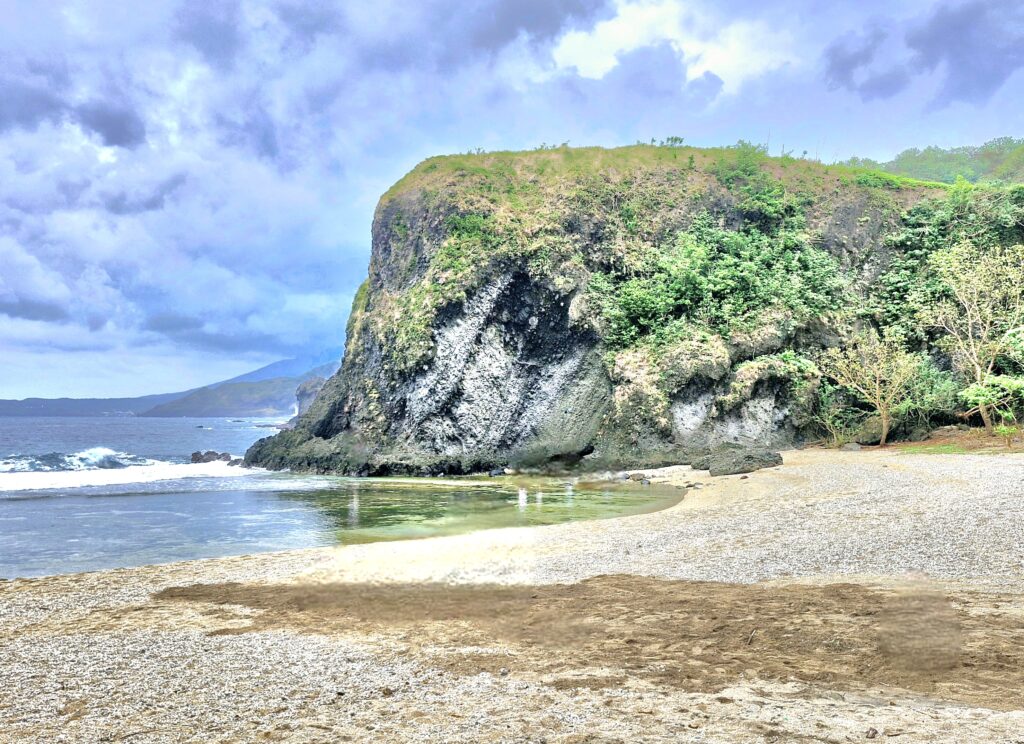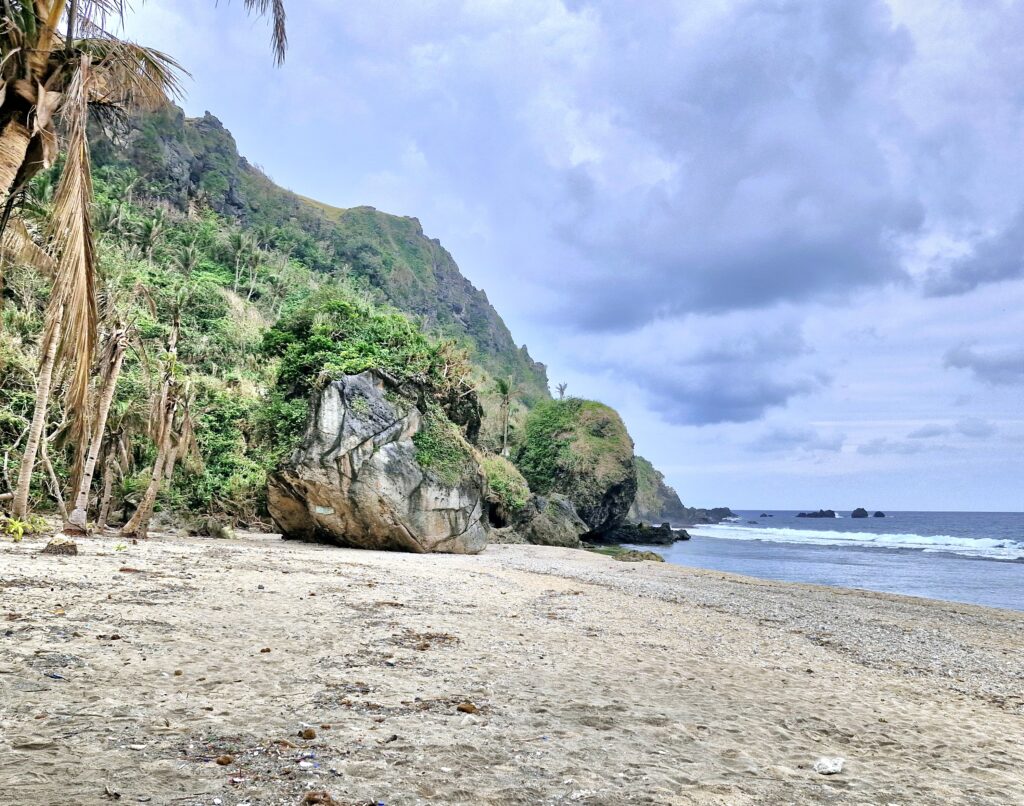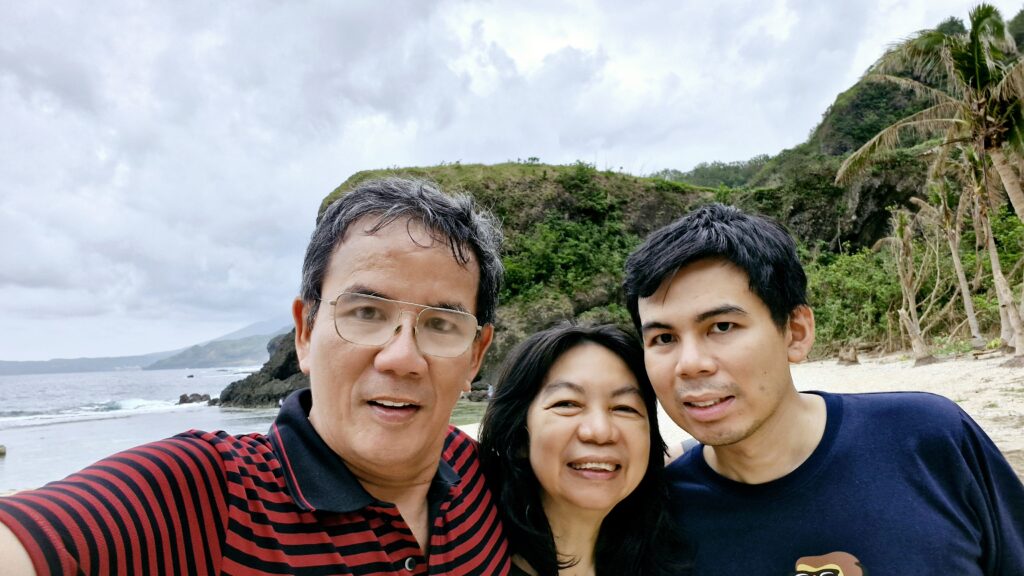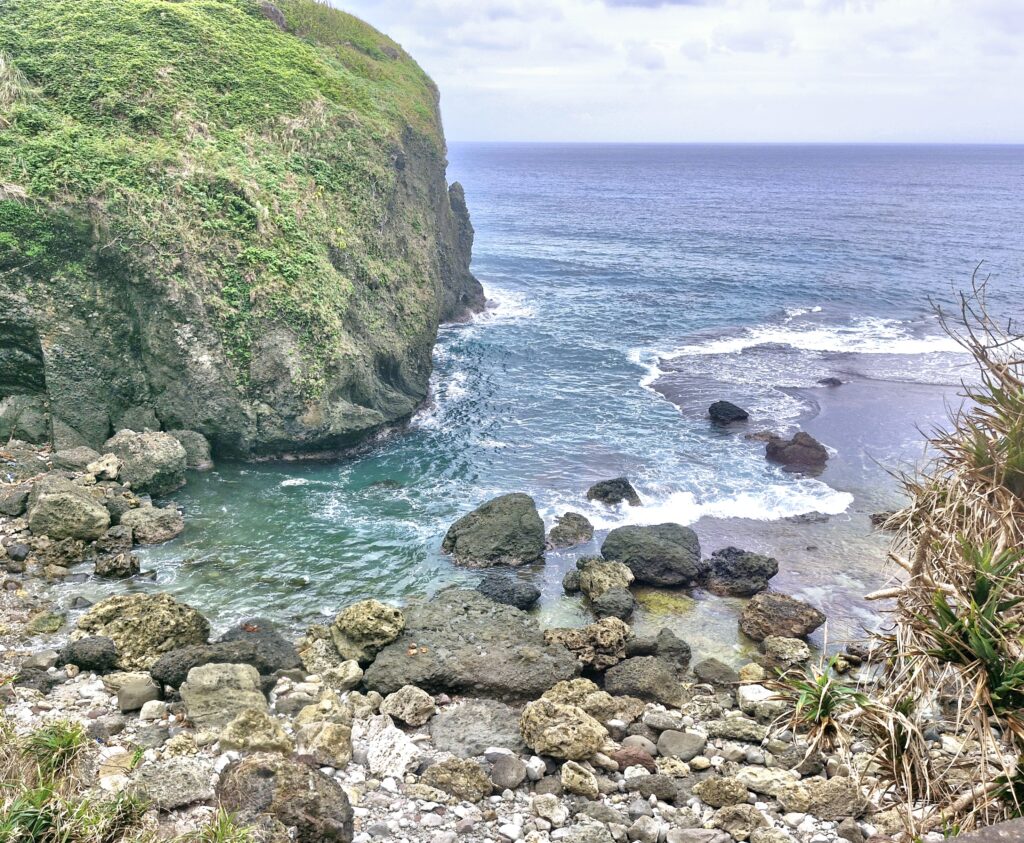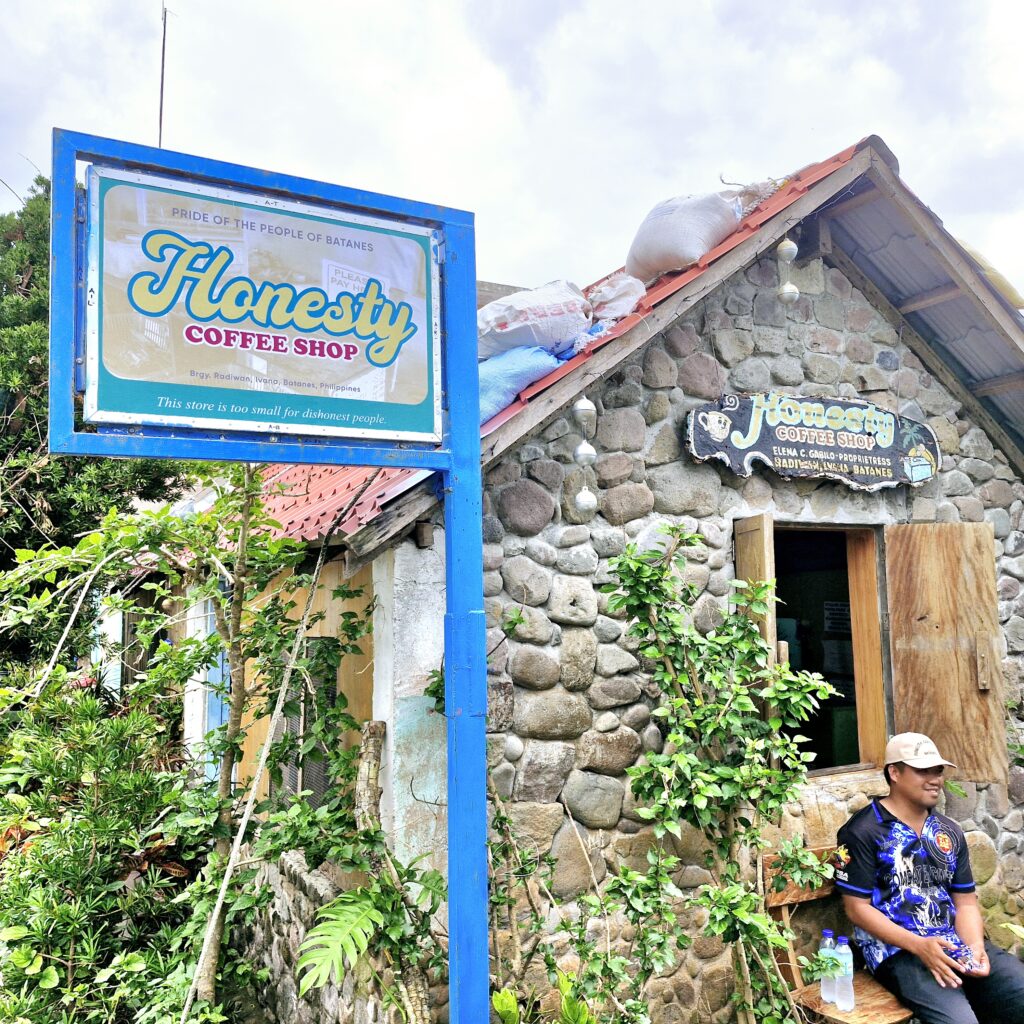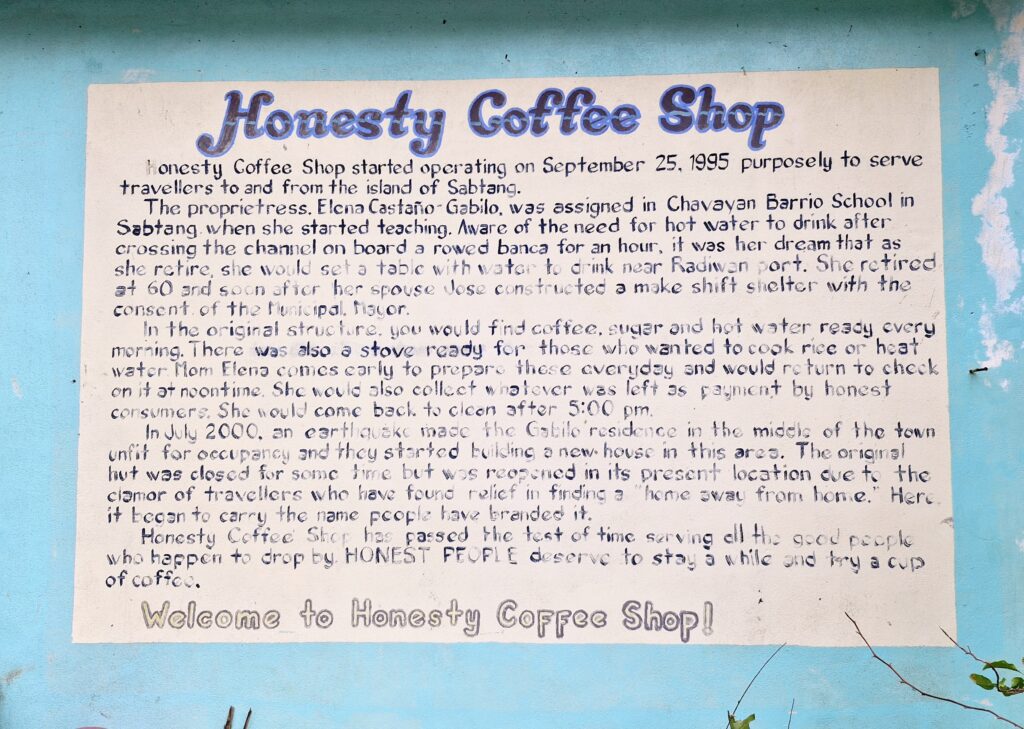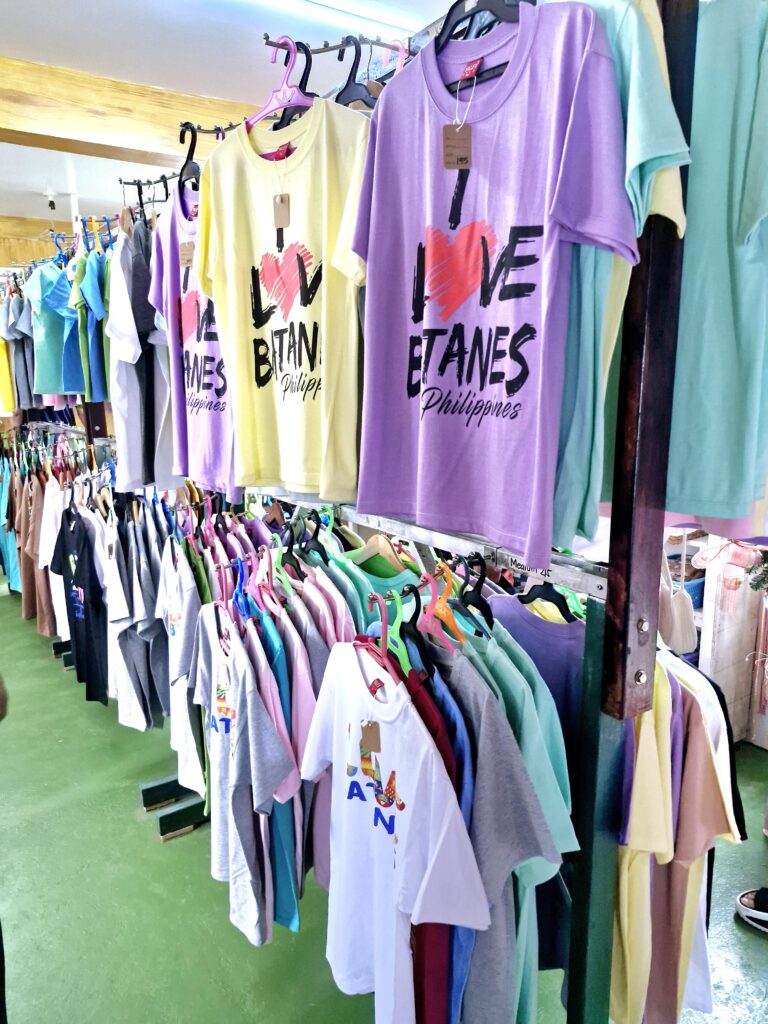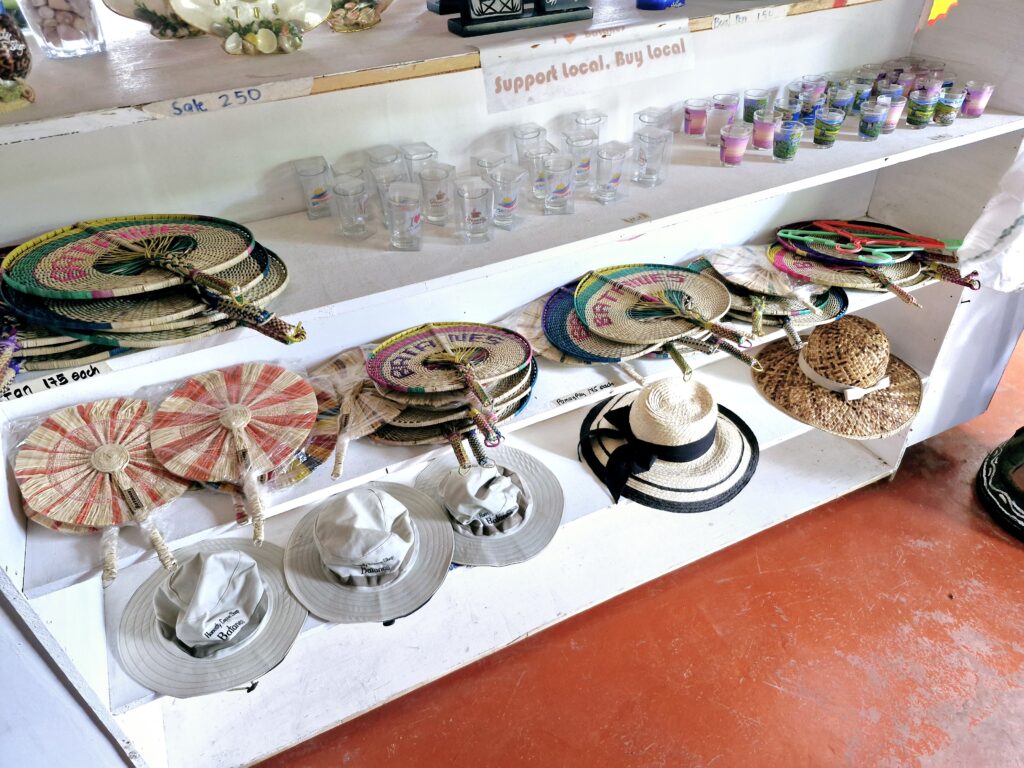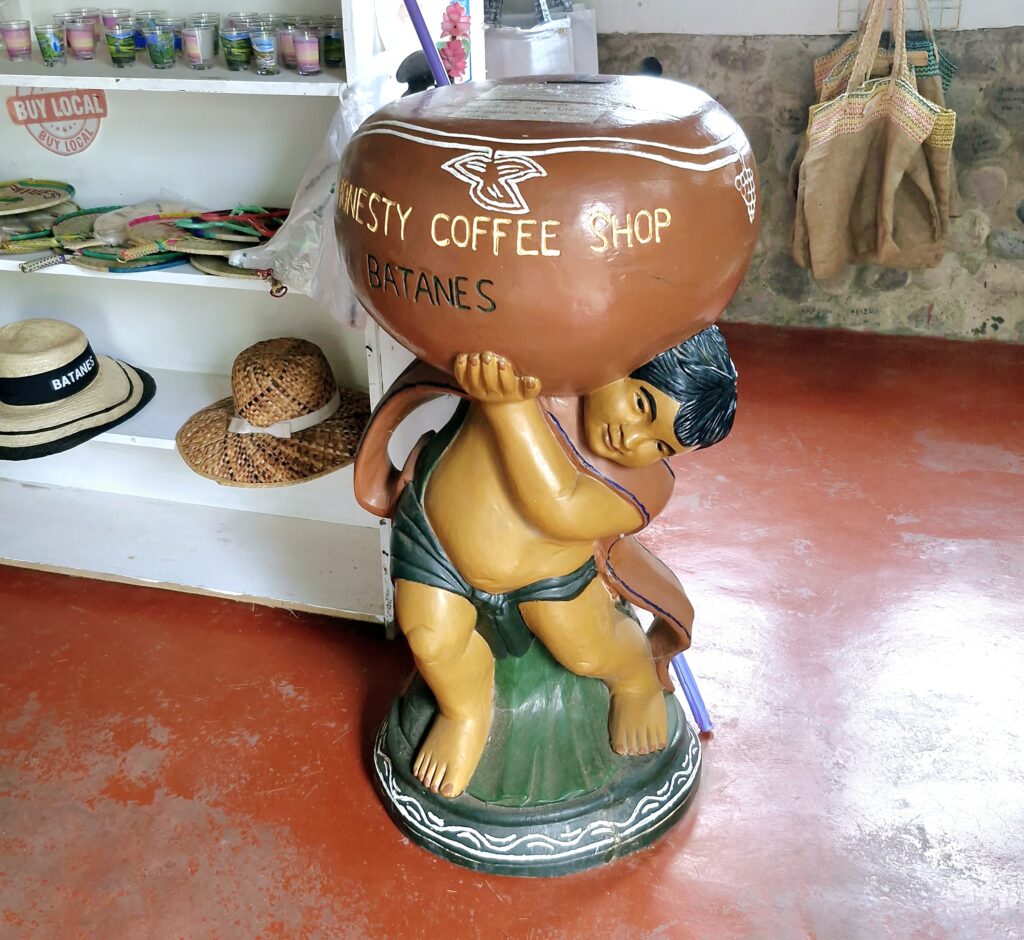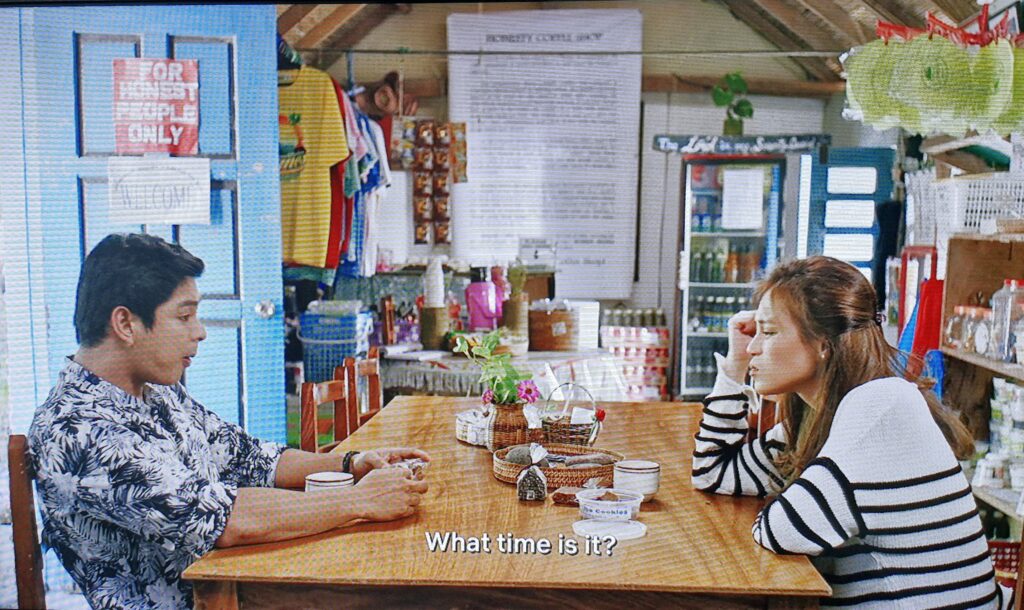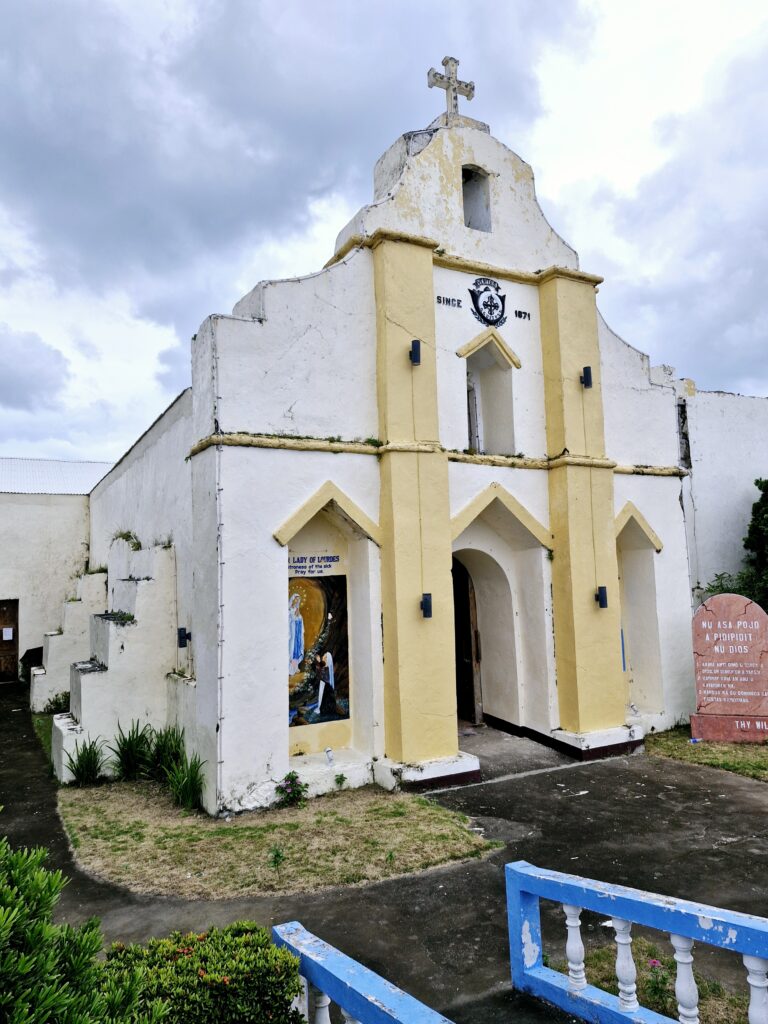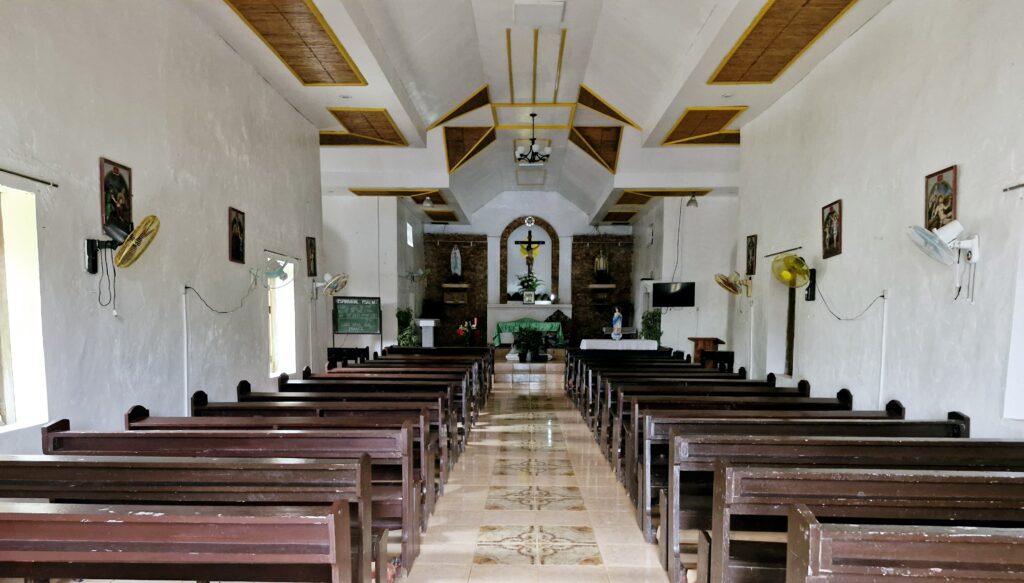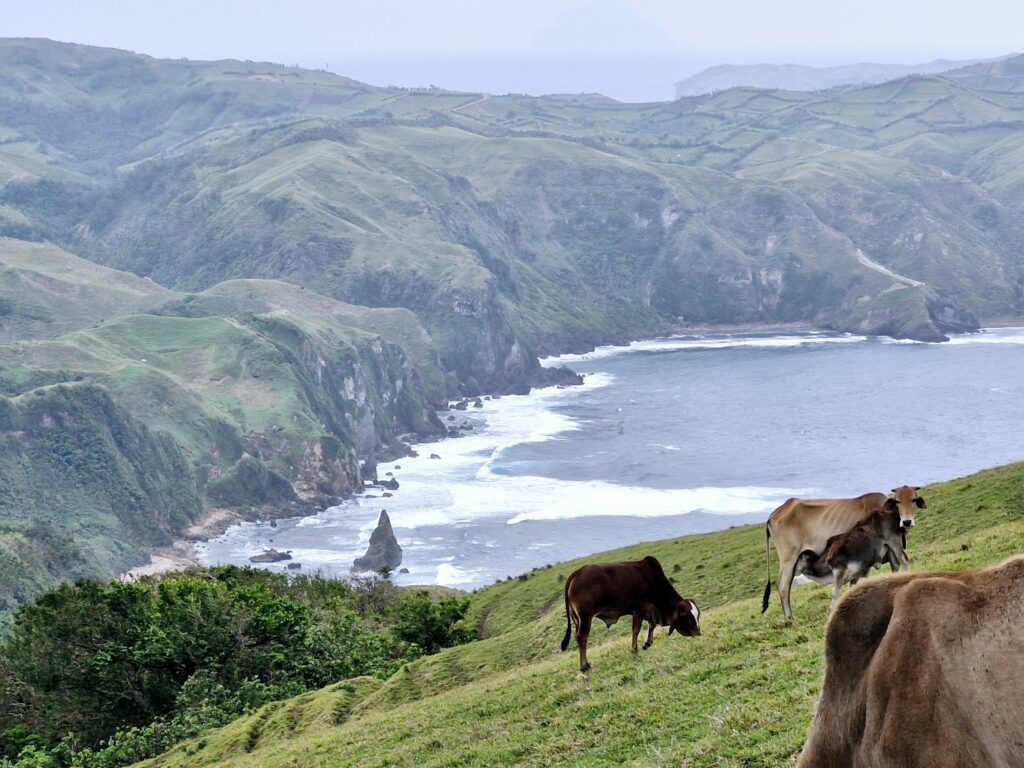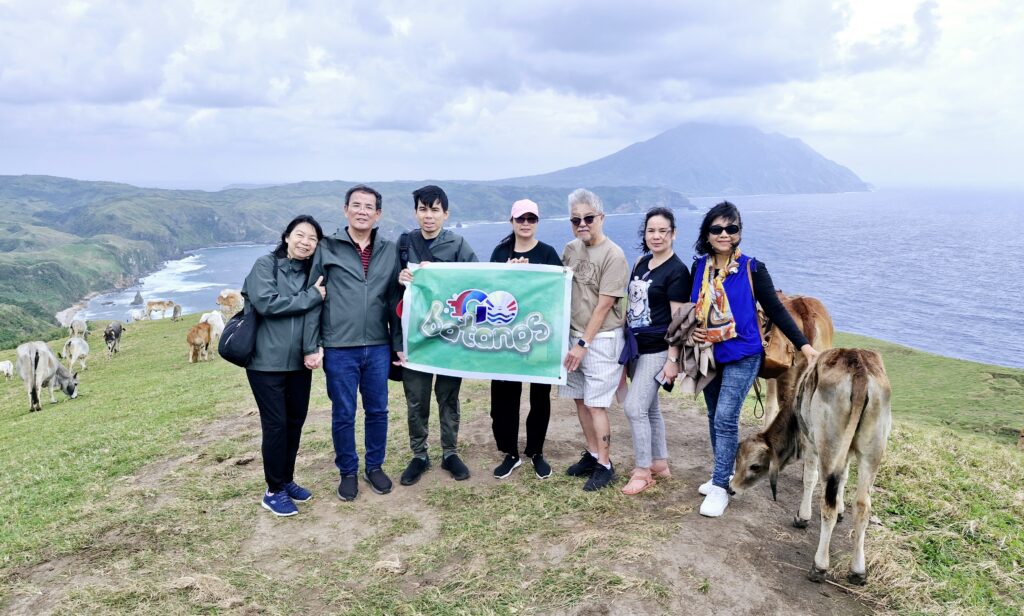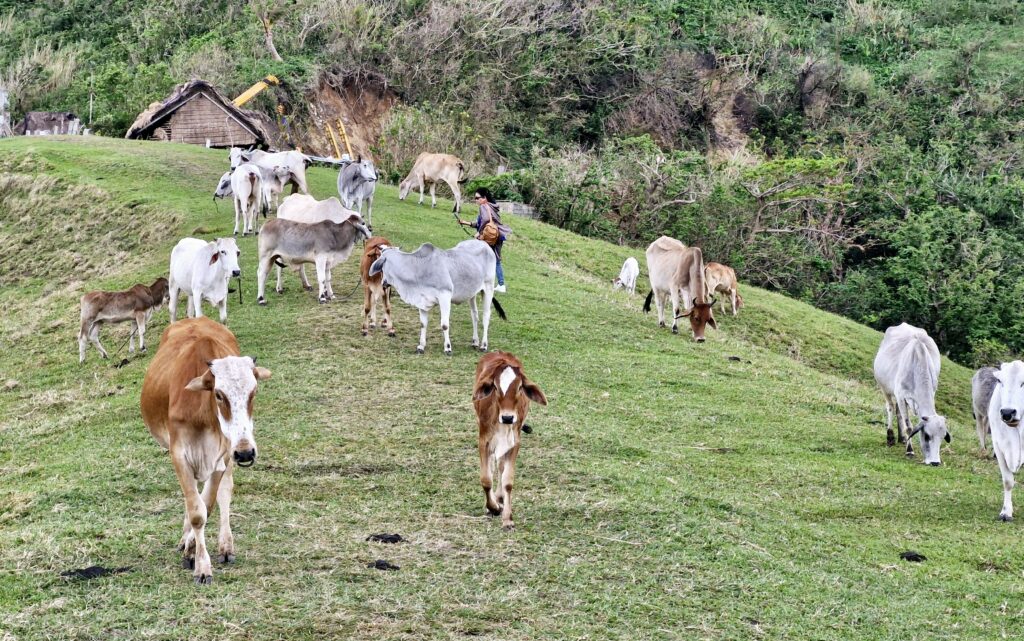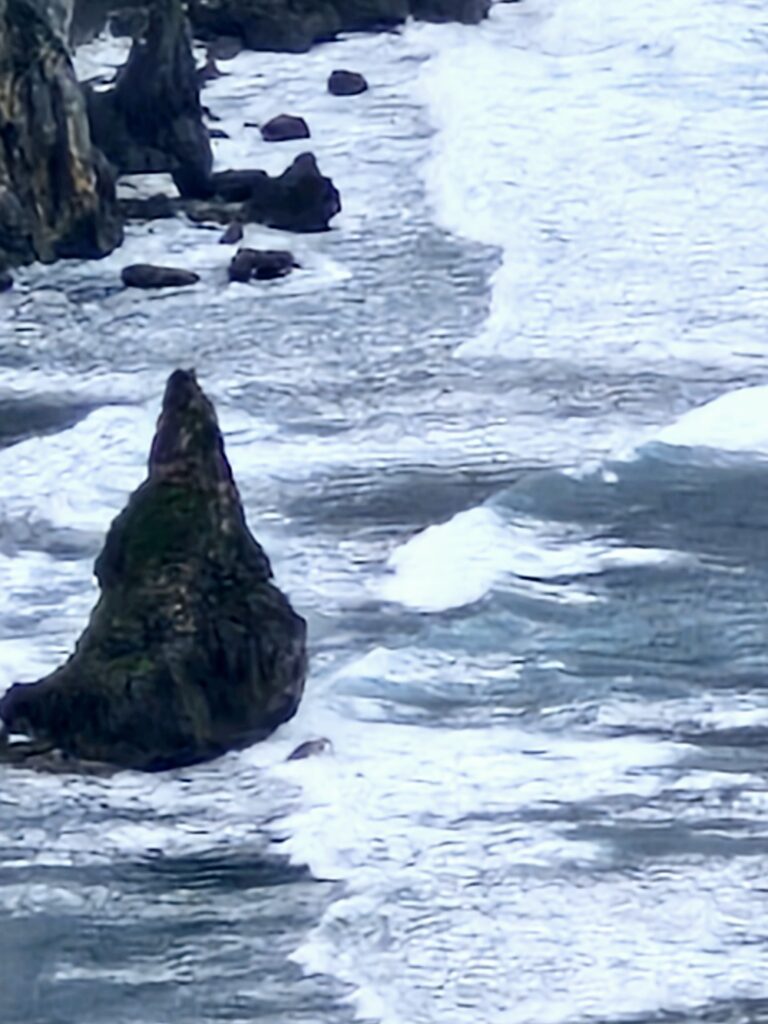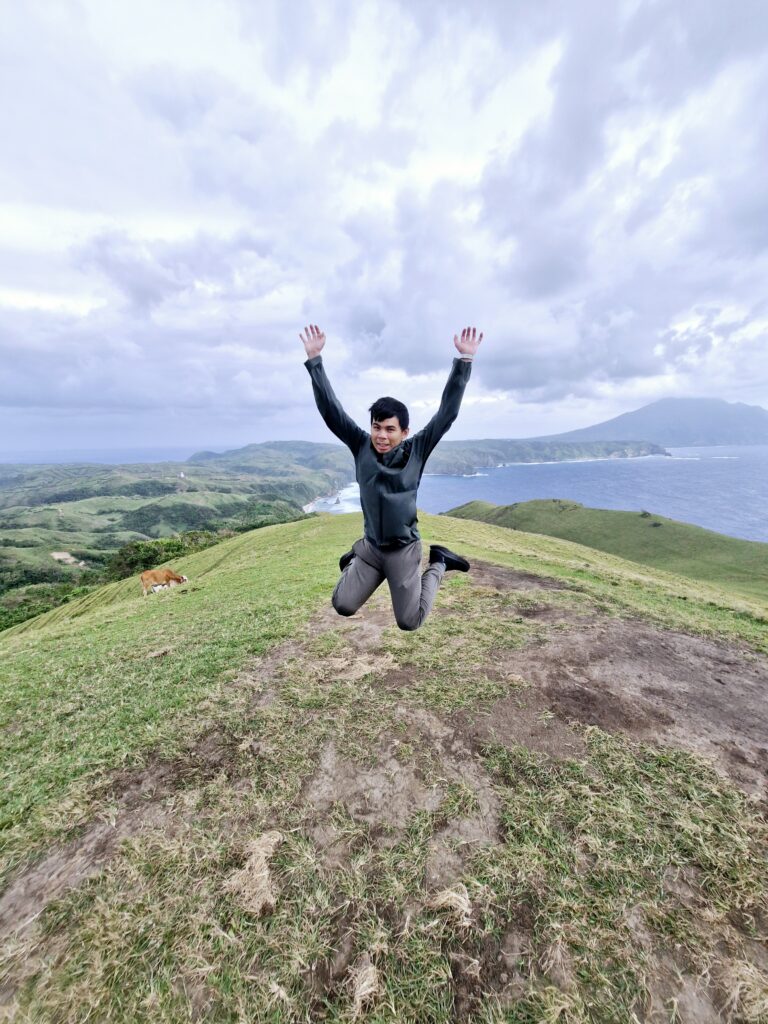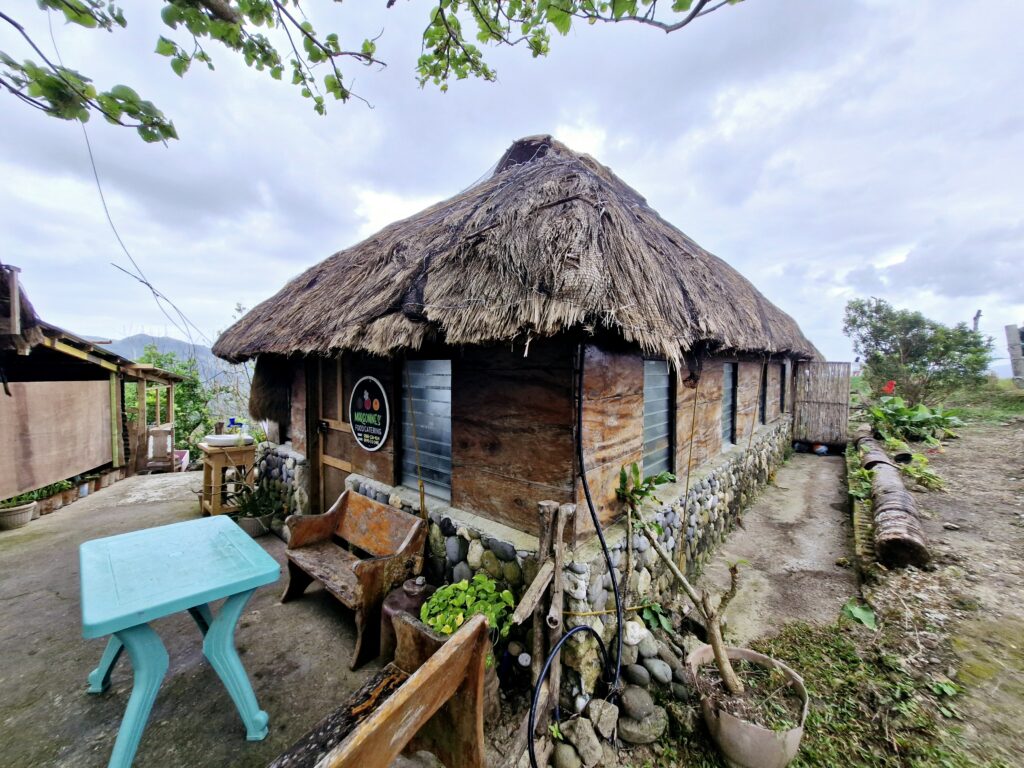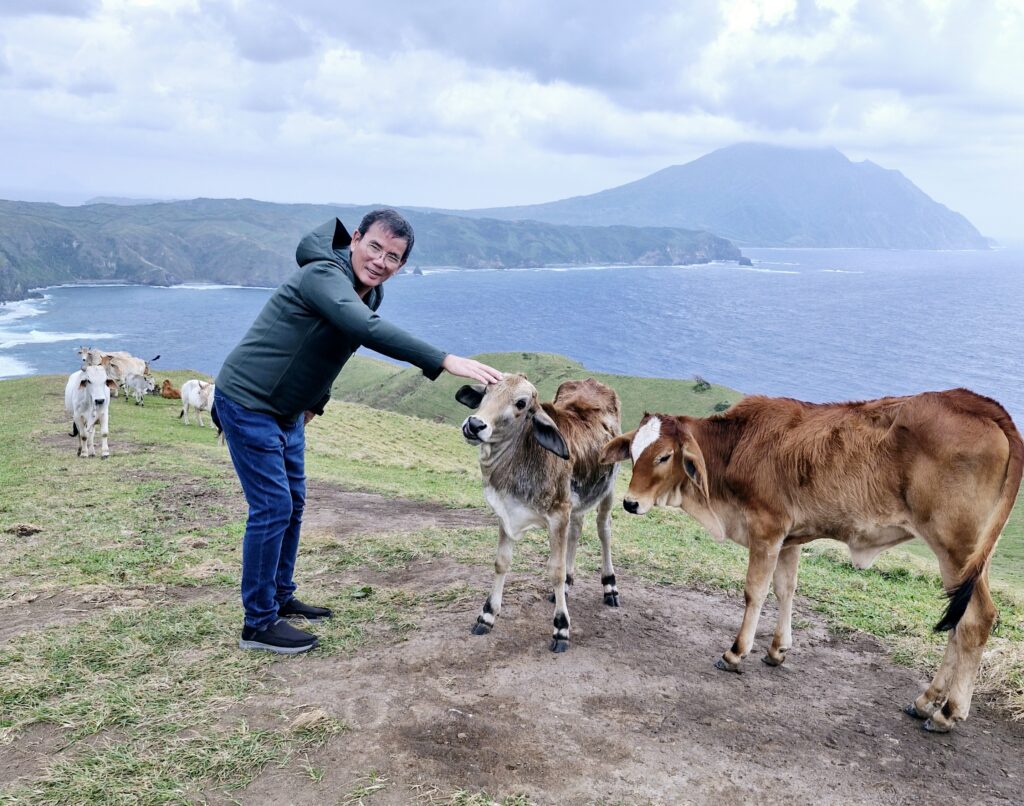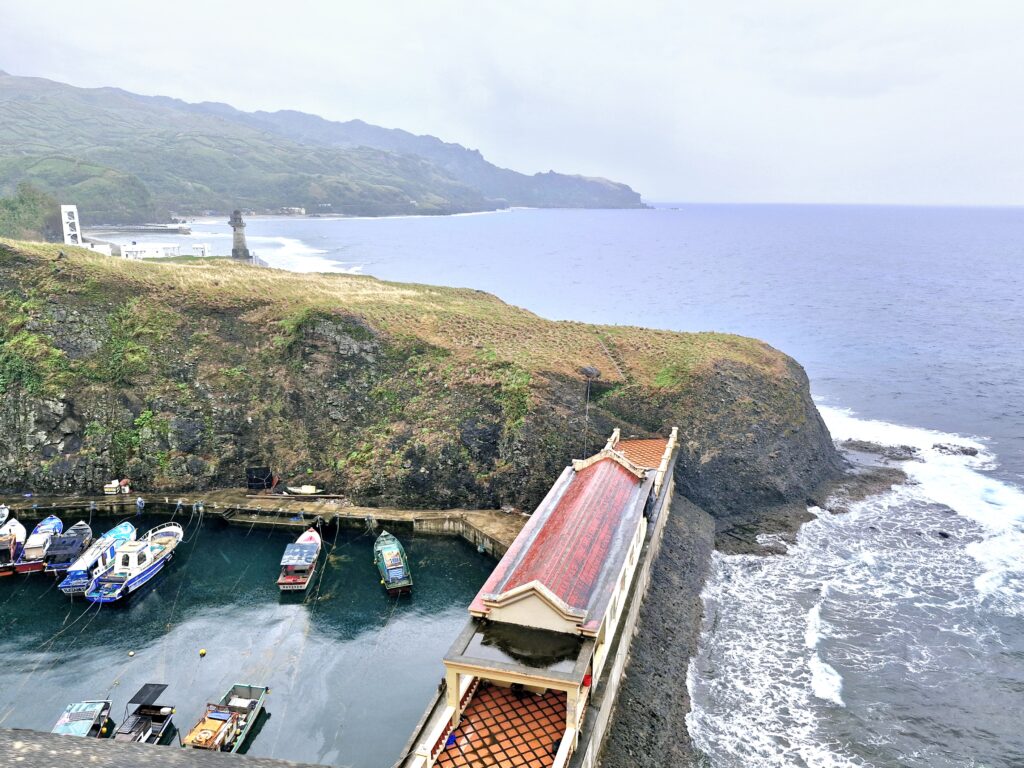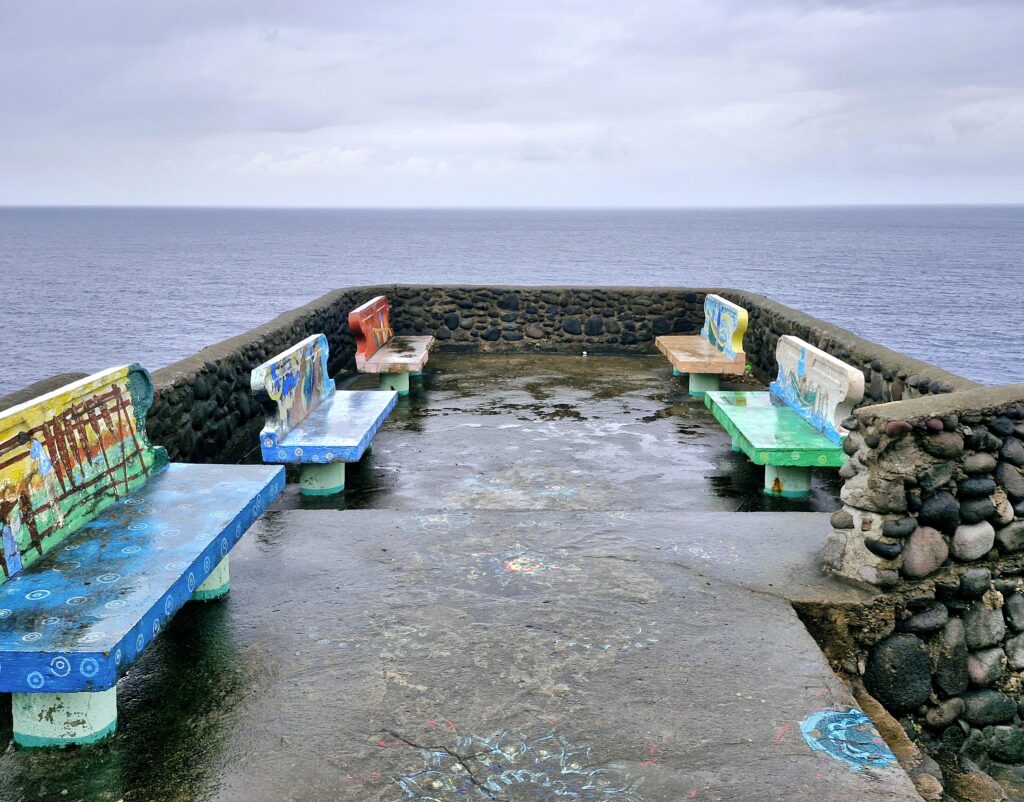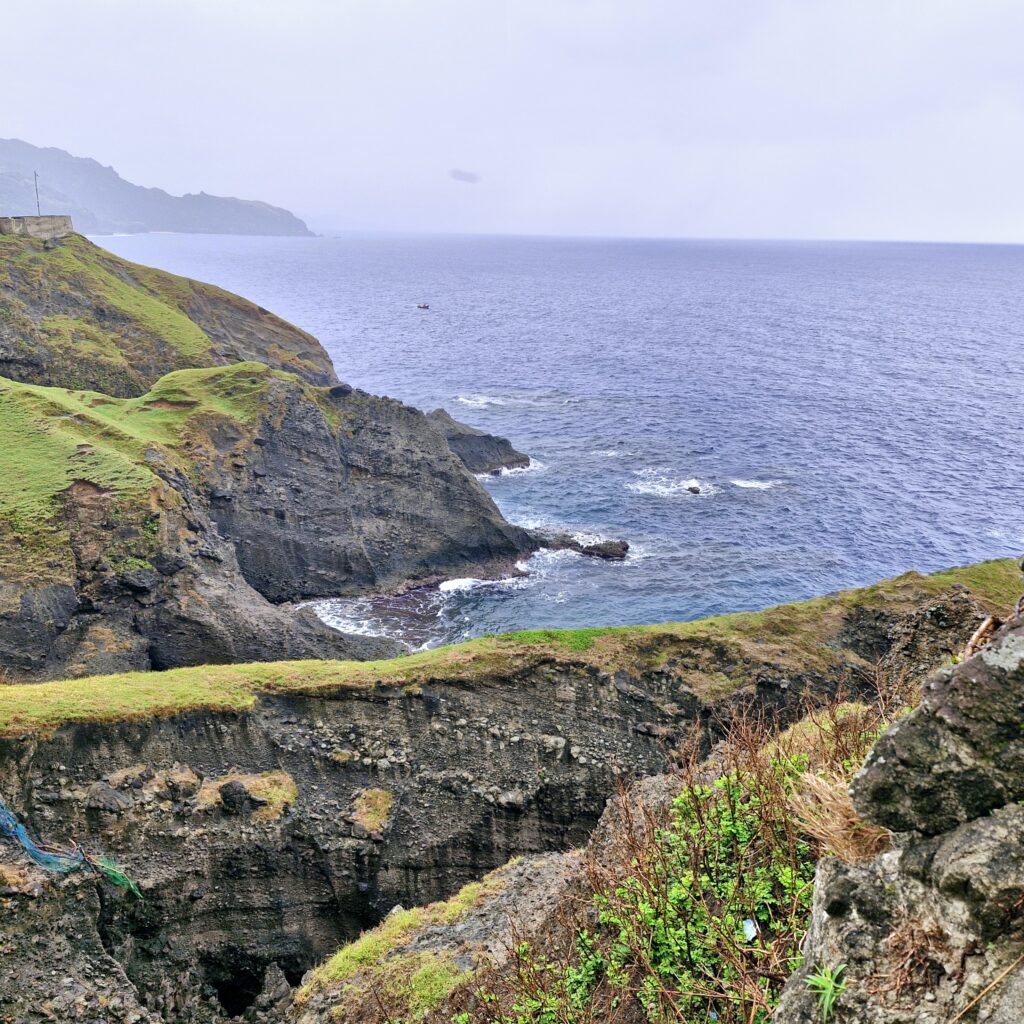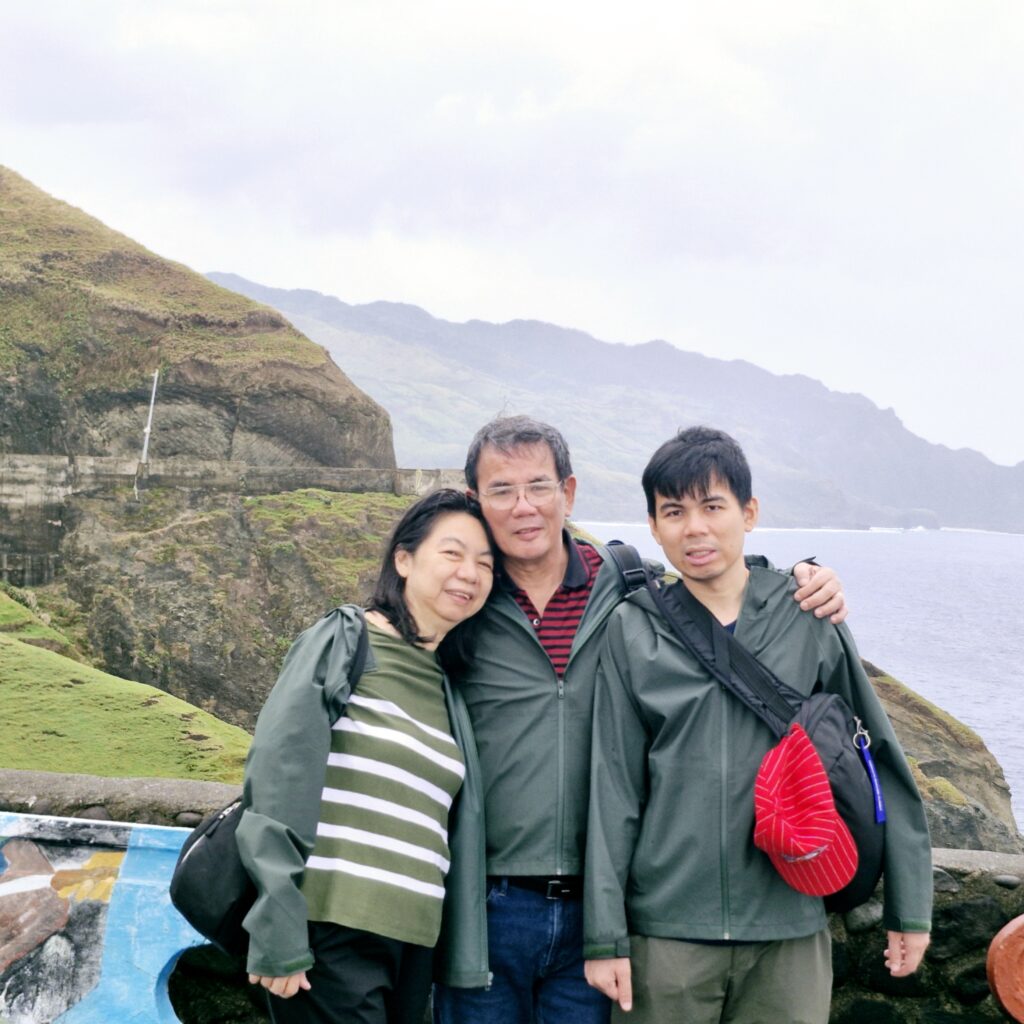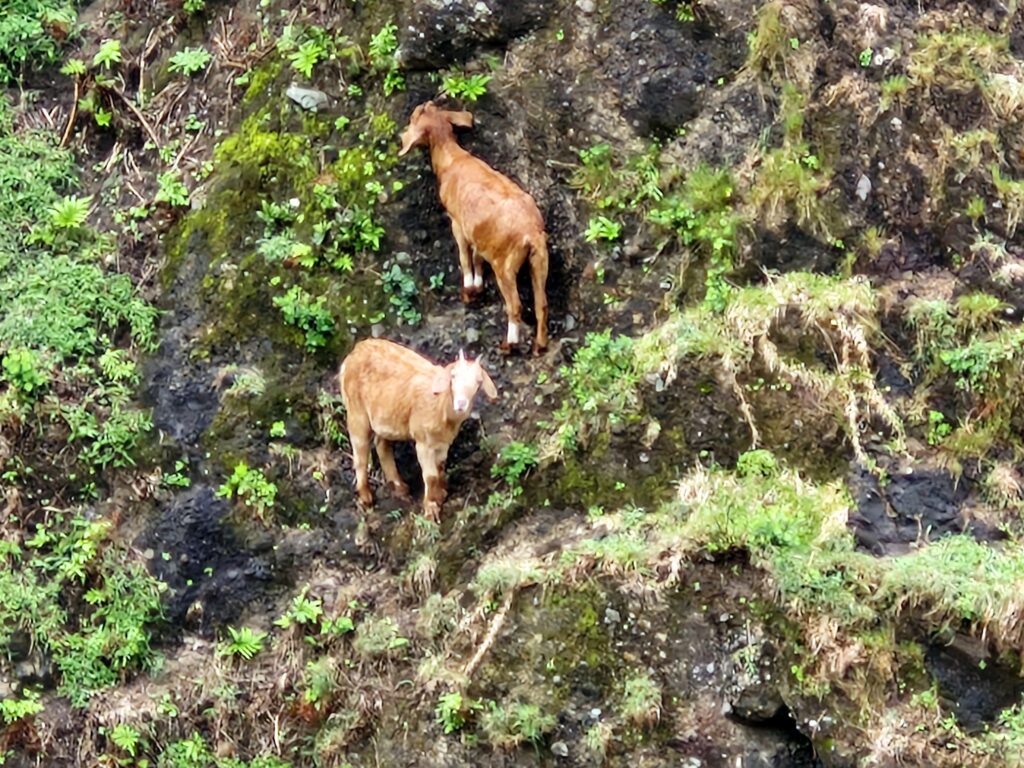Upon arrival at Benoni Port in Mahinog, we met up with our local guide Mr. Quin Acala. Boarding a multicab, we first brought to the nearby J&A Fishpen Resort and Restaurant for lunch. Sitting on stilts, with connecting wooden footbridges, on the western bank of Taguines Lagoon, near Benoni Port, it has an amazing view of the lagoon and the sea beyond.
This was not my first visit to this restaurant as I also had lunch here during my first visit to Camiguin in 2001. Formerly used as a fishpond, it was eventually converted into a floating restaurant.
Check out “Taguines Lagoon (2001)”
The variety of fresh seafood available, which you can order, can be fried, steamed, grilled, kilawin (ceviche) or cooked with soup. On an individual cottage on stilts, overlooking the lagoon, we dined on calamares, garlic shrimps and chopsuey, with rice, for lunch. The servings were generous and you do not have to worry about the freshness.
This beautiful artificial lake, home to the Benoni Marine Sanctuary managed by the Bureau of Fisheries, is also known as the Camiguin Blue Lagoon. It was said to have been actually made from the crater of an extinct volcano. The lagoon has a maximum depth of 11.24 m. and has mantles of limpid water surrounded by craggy cliffs, huge boulders and gently rolling hills.
Around it are fishpens where bangus (milkfish), mamsa (jack), lunab (surgeonfish), katambak (spadefish), danggit (seganid), maming (parrotfish), kitong and alimango (crabs) are bred.
The restaurant now offers the first and only zipline (Php250) in Camiguin. There are two cables. One is 740 m. long while the second, shorter one is 480 m. long and drops you off at the restaurant.
At the lagoon, you can also kayak, pedal or paddle your way to different stations and view the different marine species, in cages, such as green mussels, milkfish and commercial scale fry for production.
J.A. Fishpen Resort and Restaurant: Camiguin Circumferential Rd., Brgy. Benoni, 9101 Mahinog, Camiguin. Tel: (088) 387-4008.
How to Get There: Taguines Lagoon is just a 1 km. (2-min.) drive from Benoni Port.



